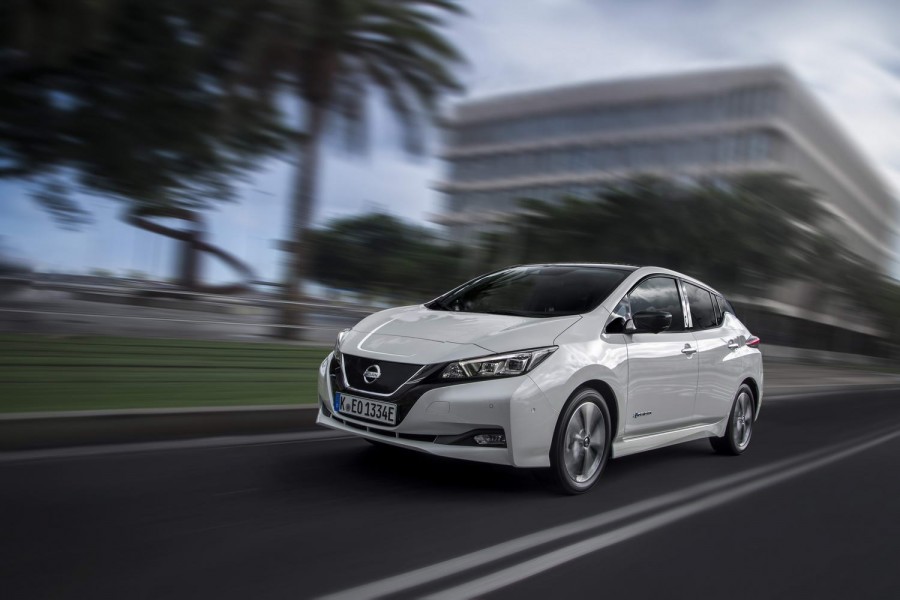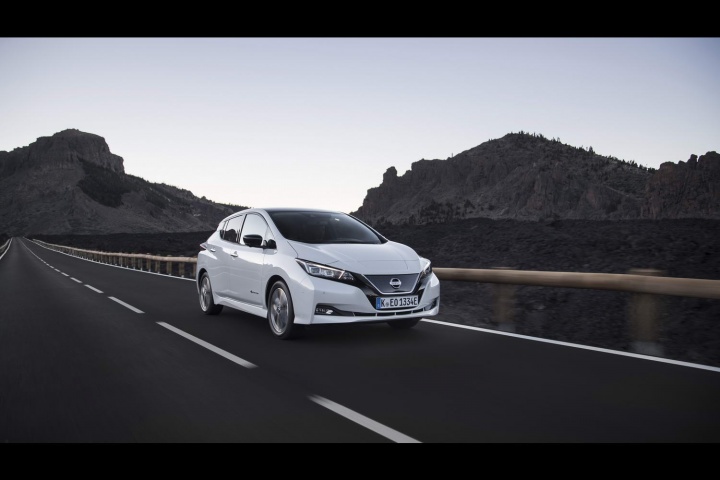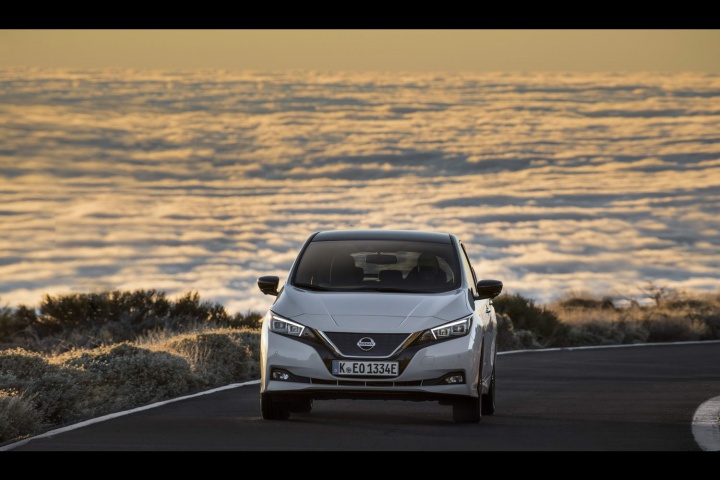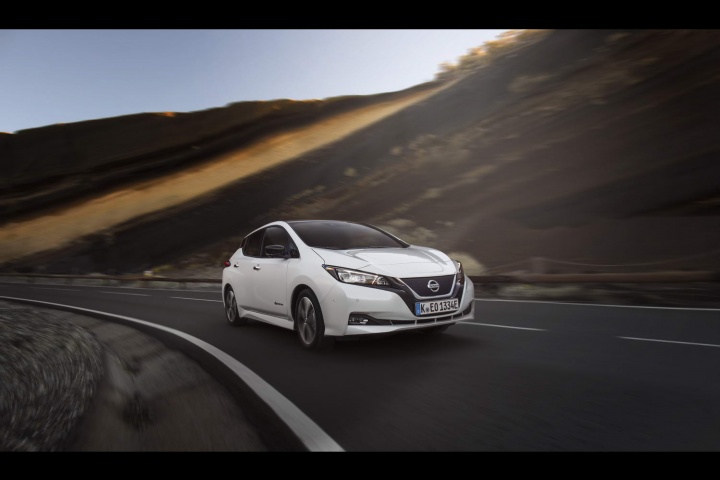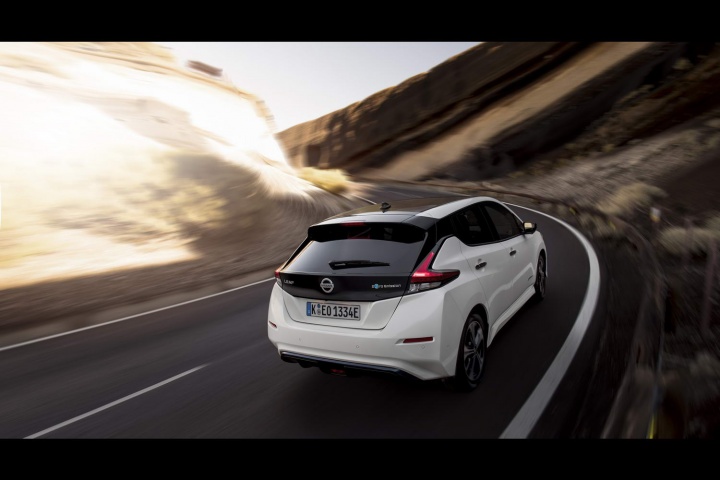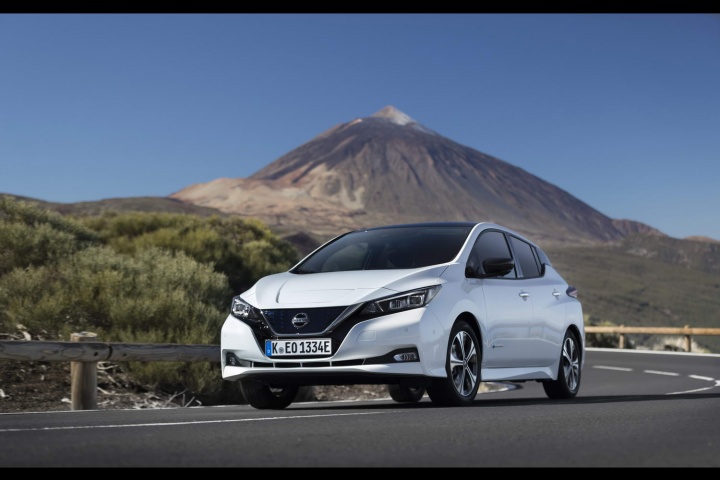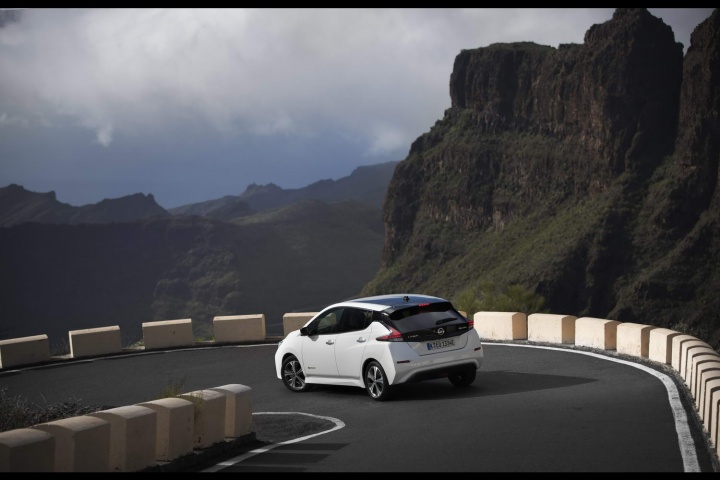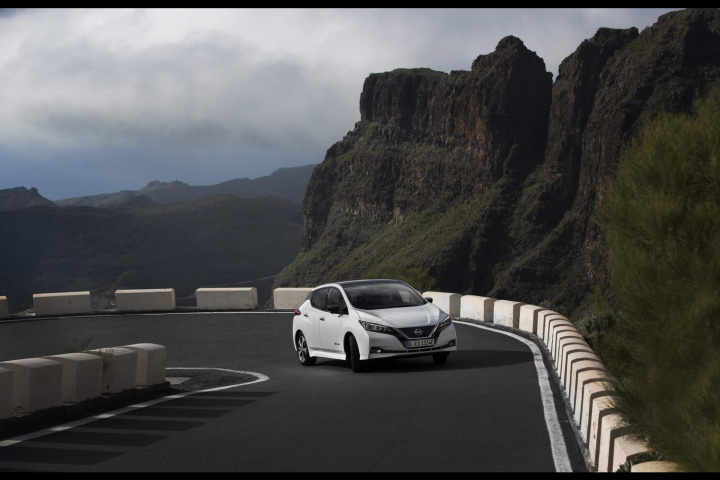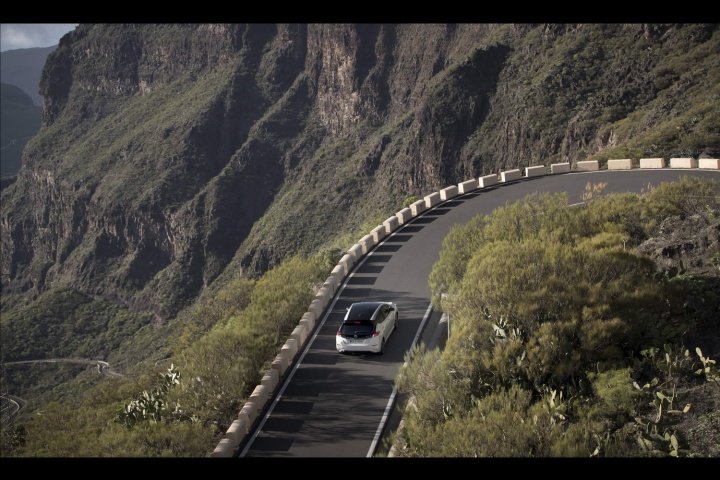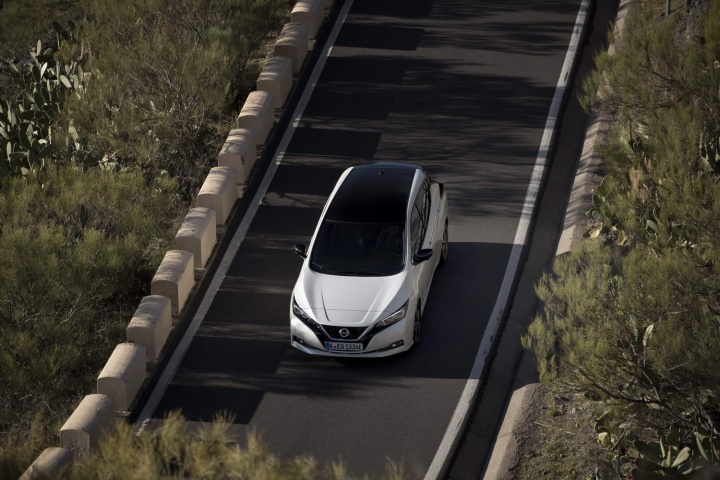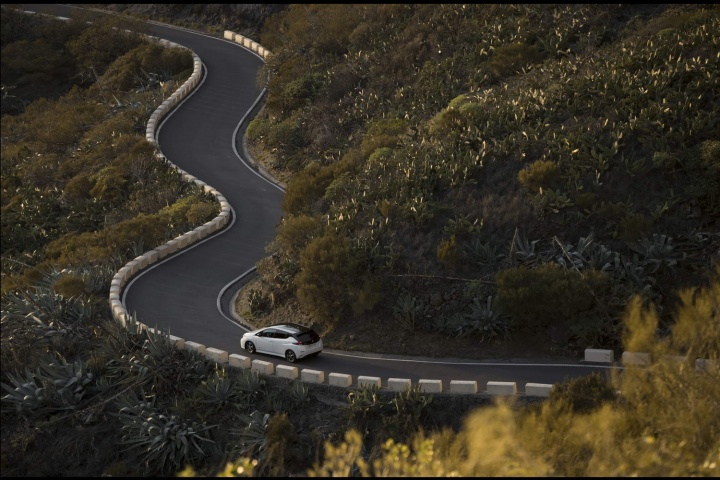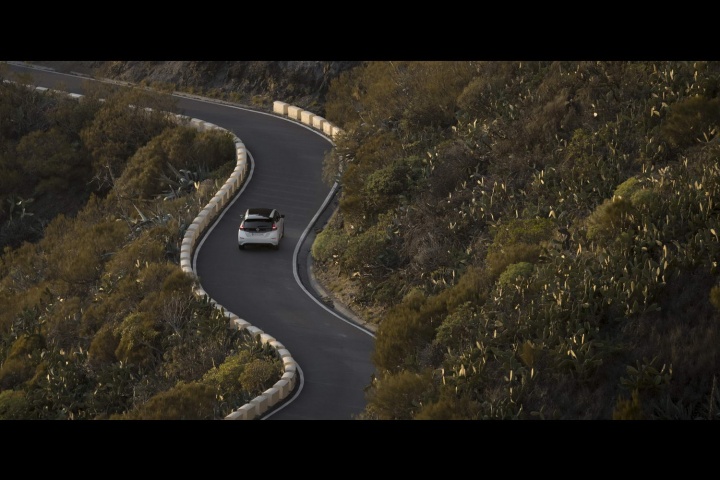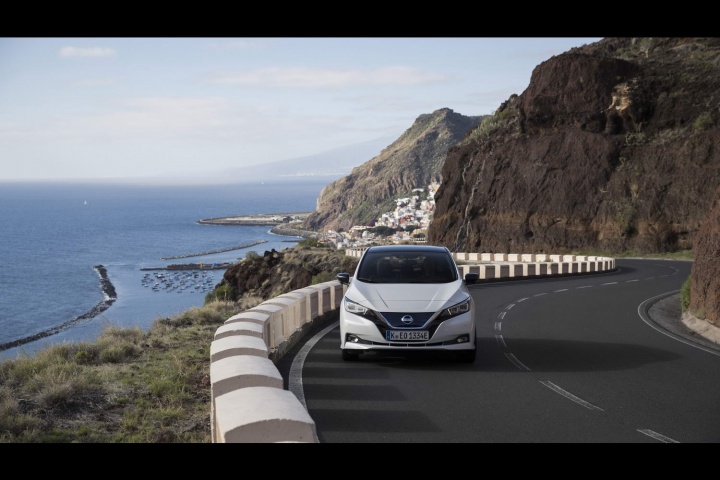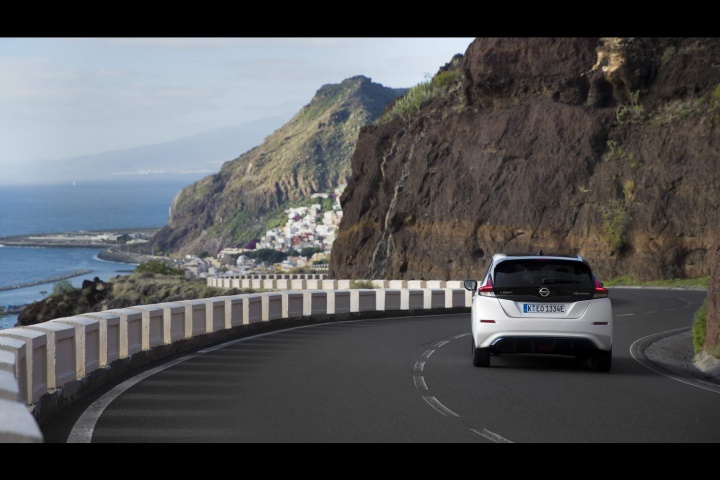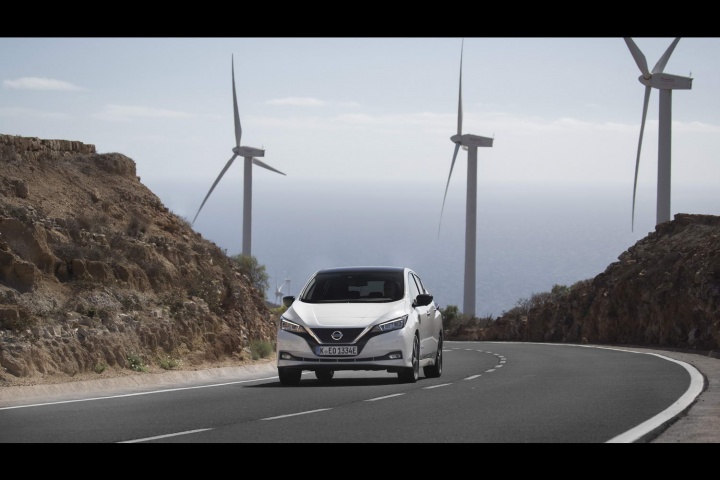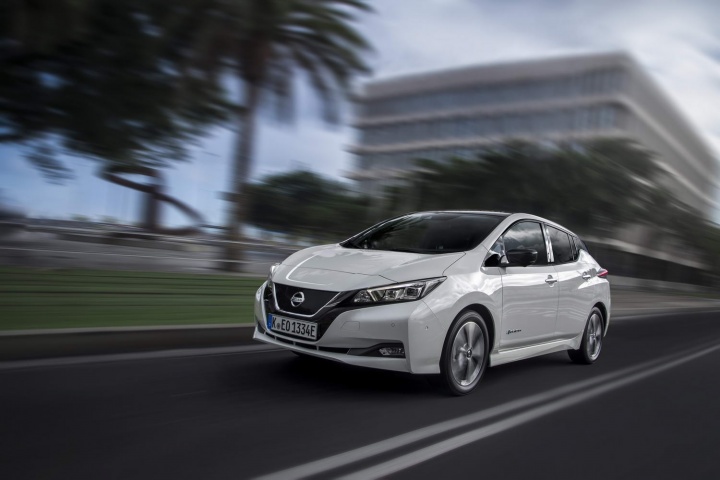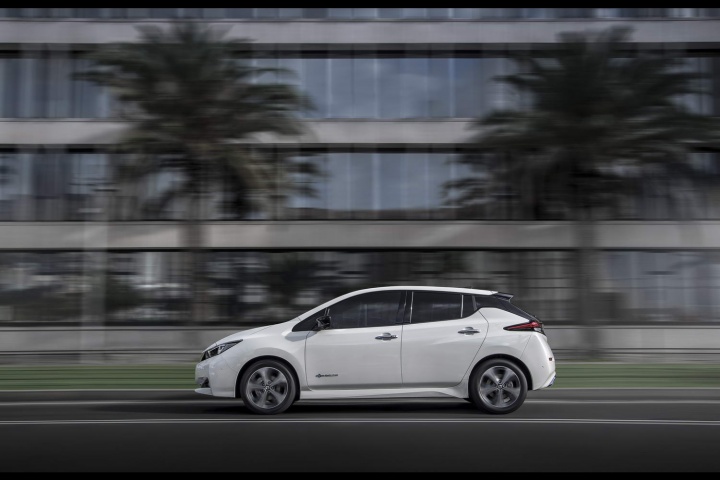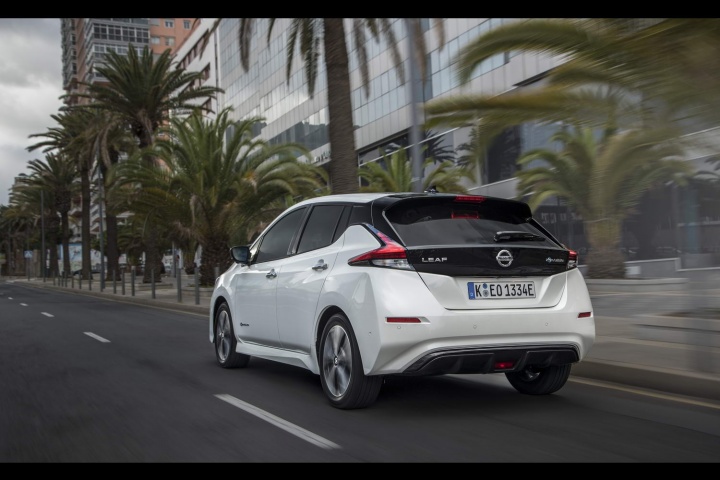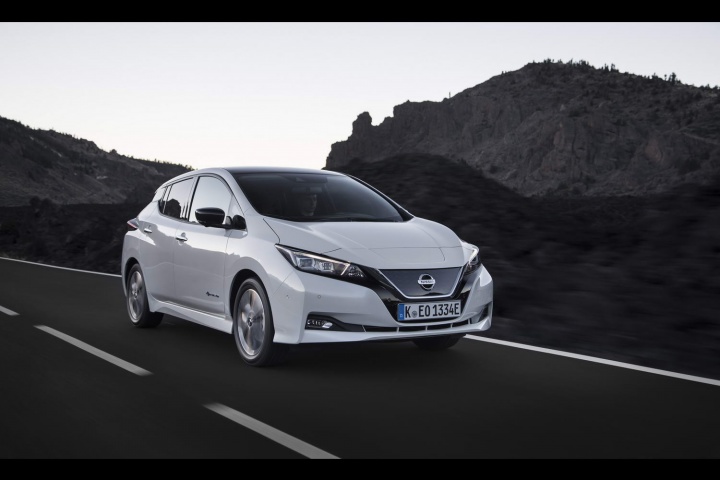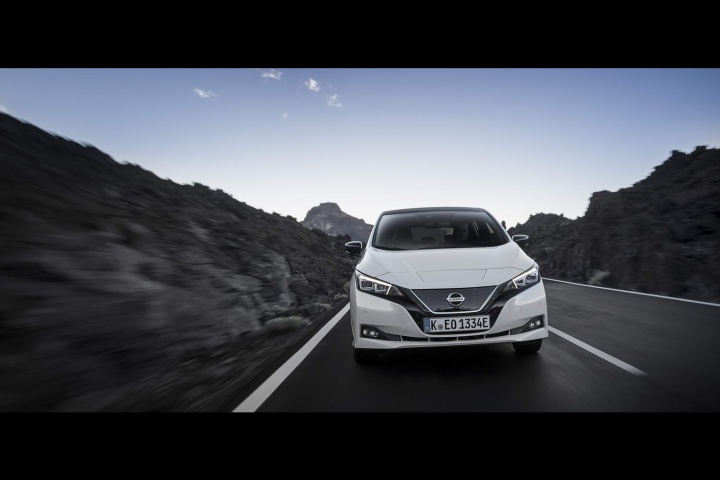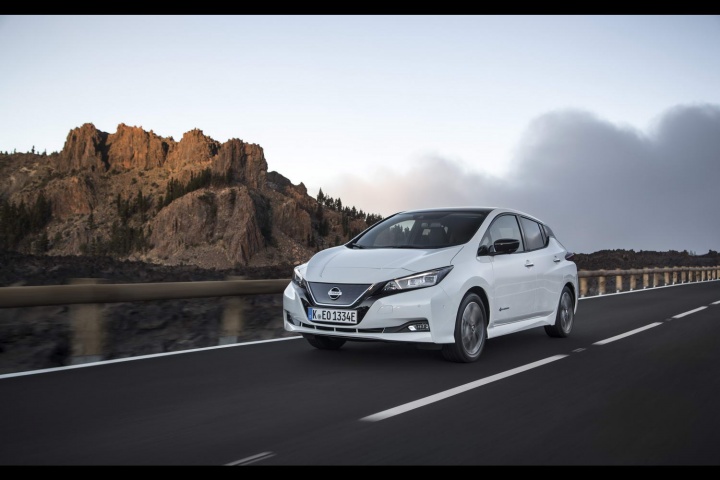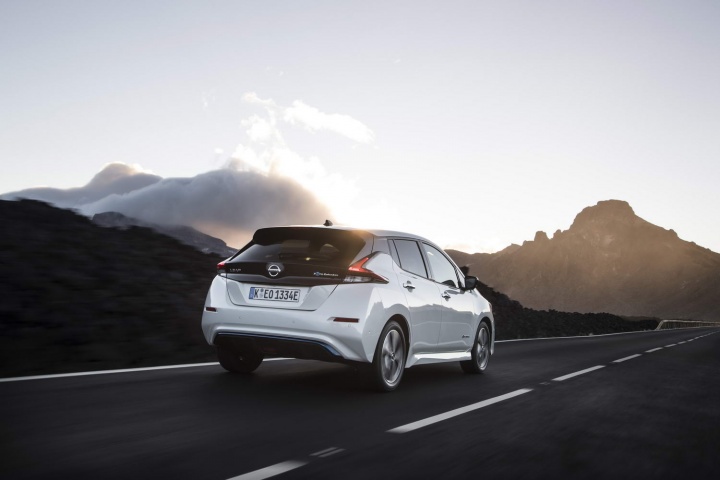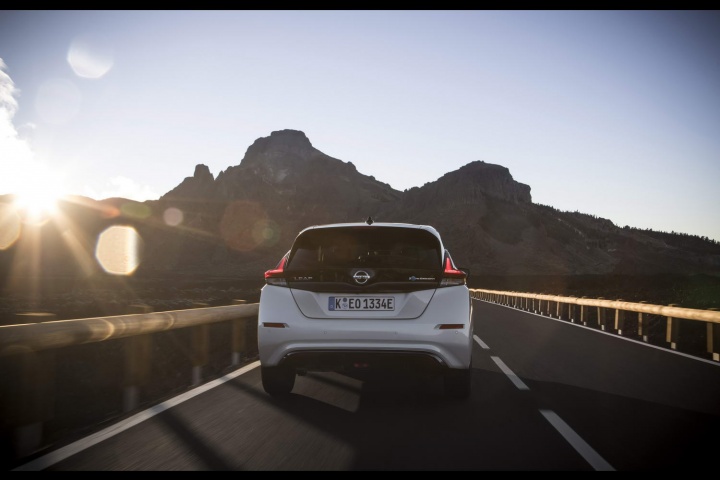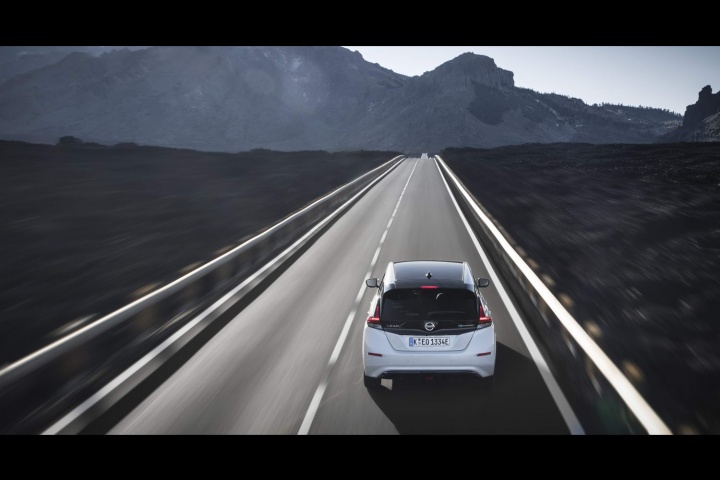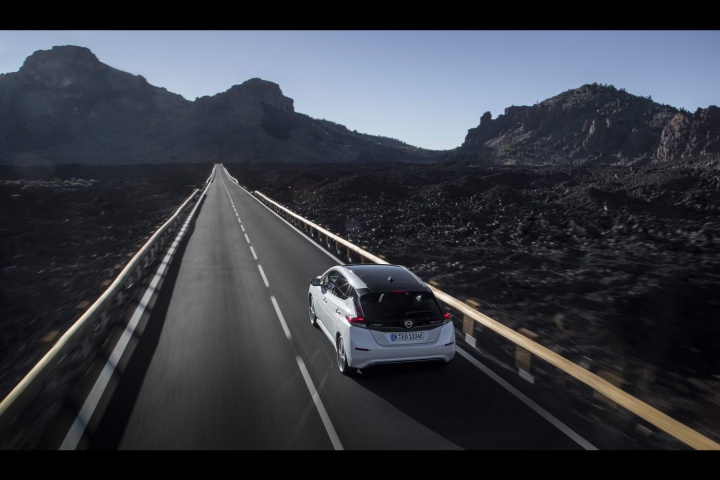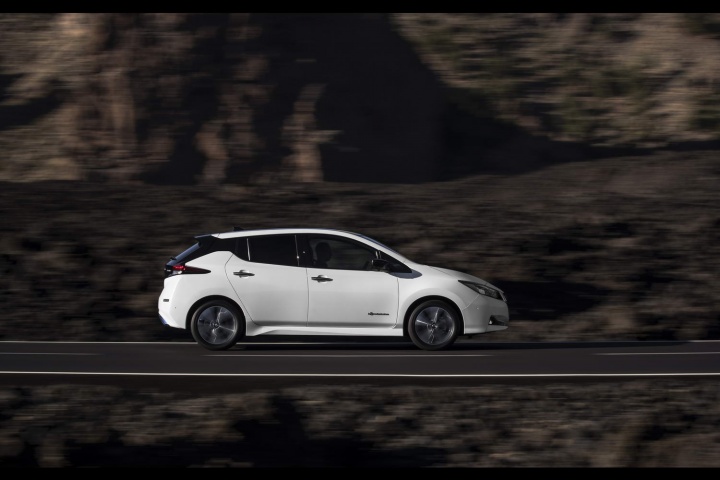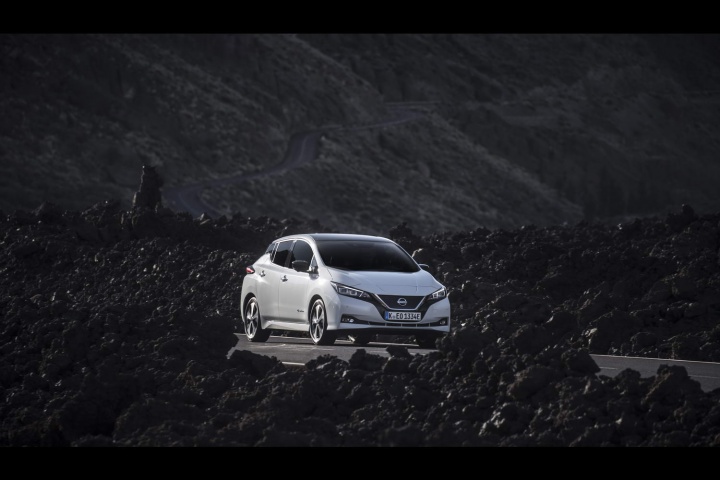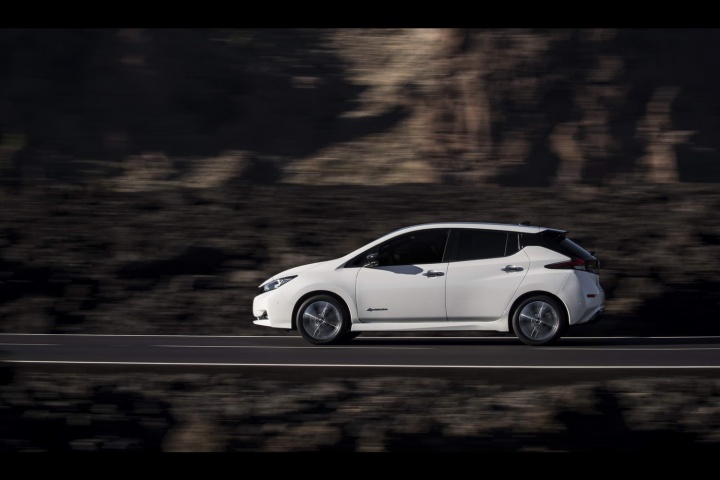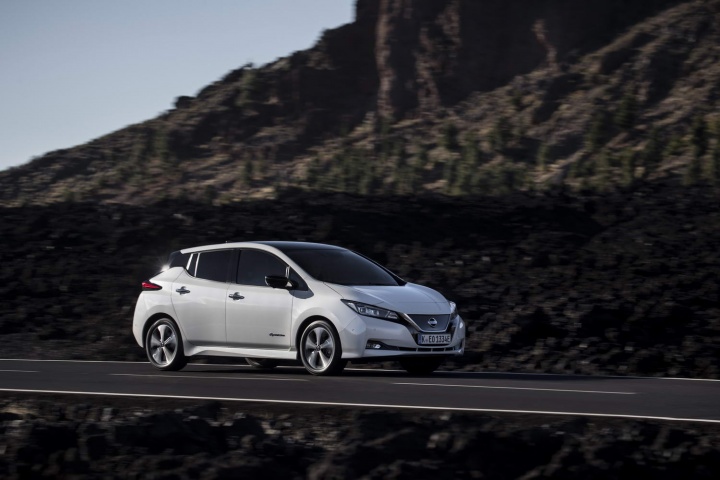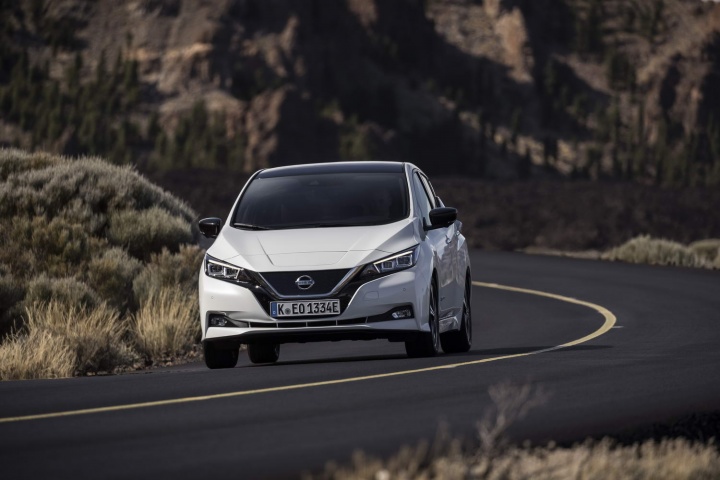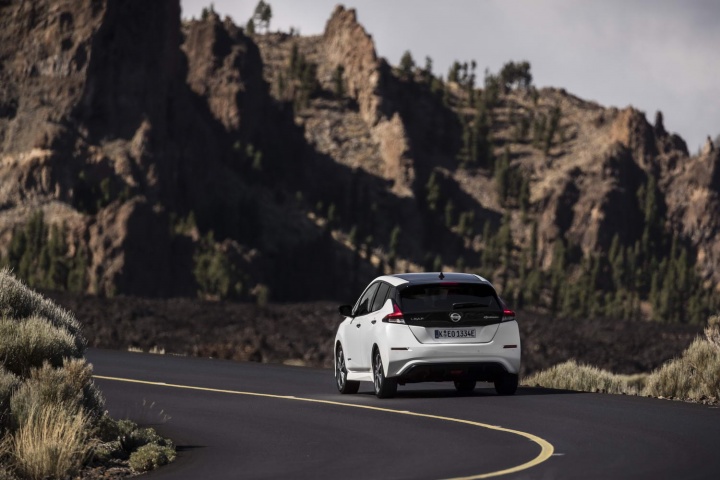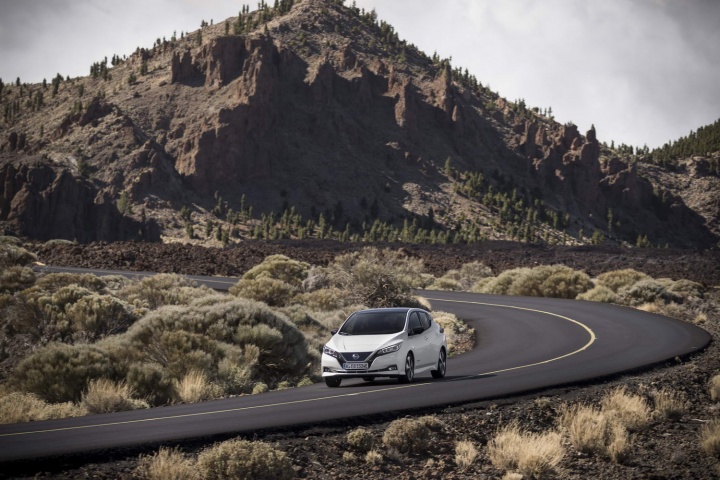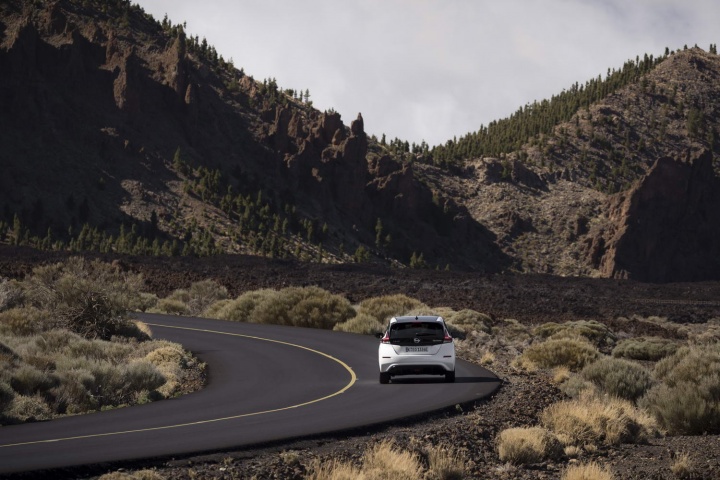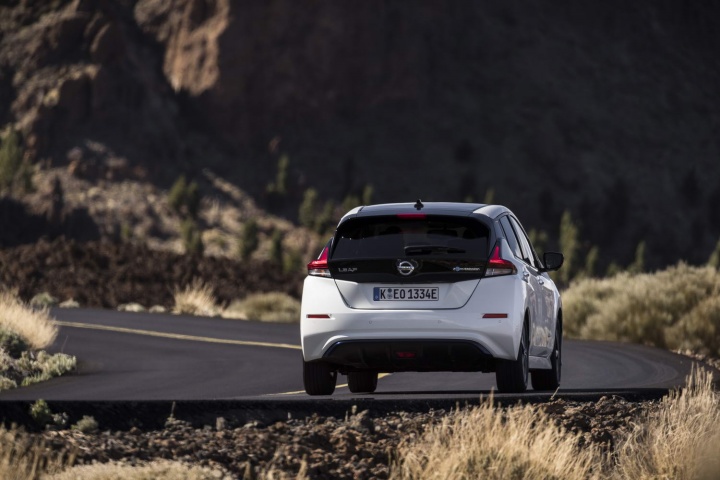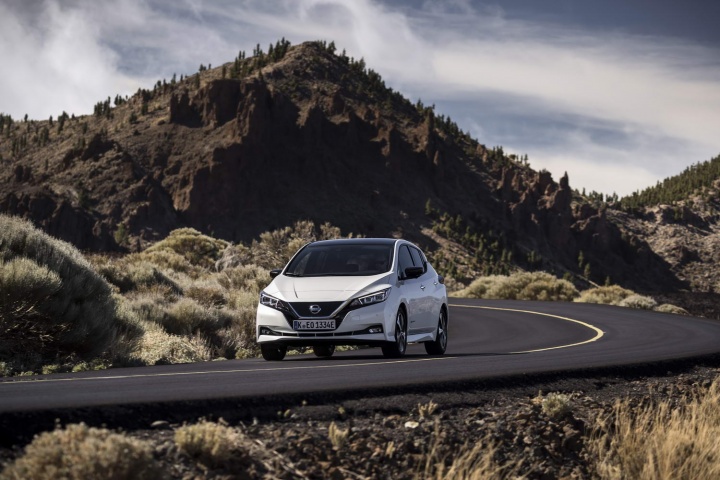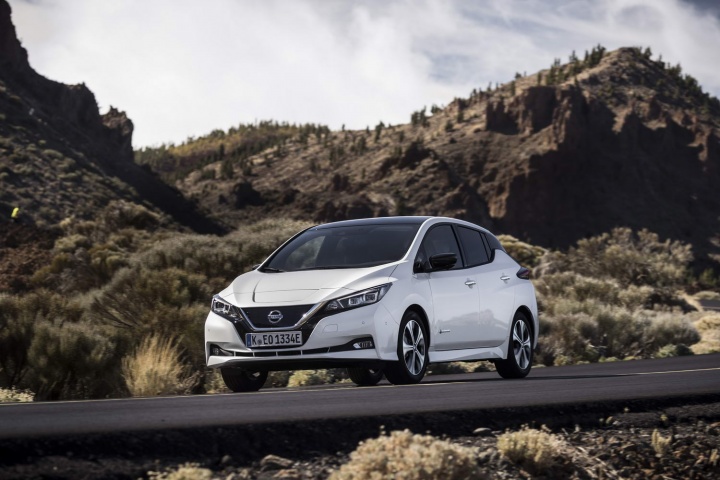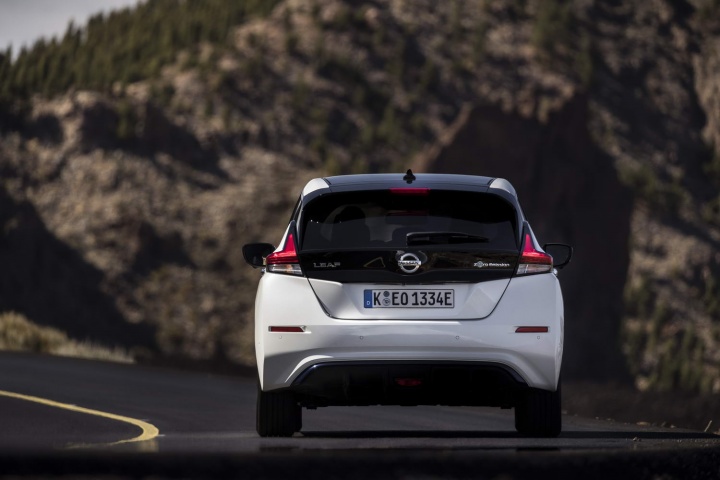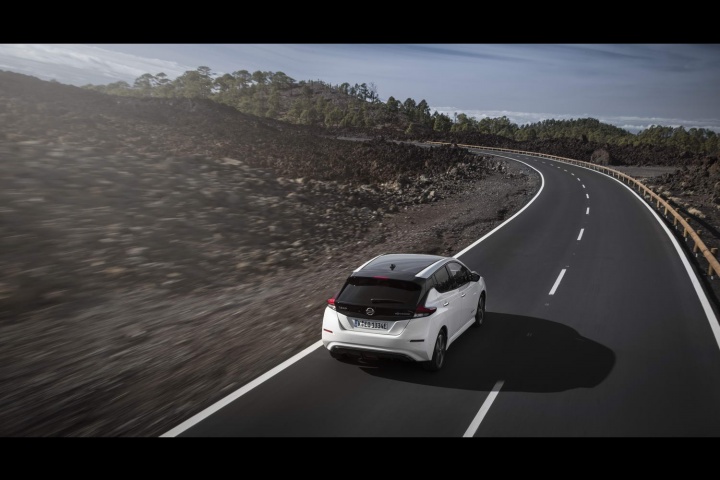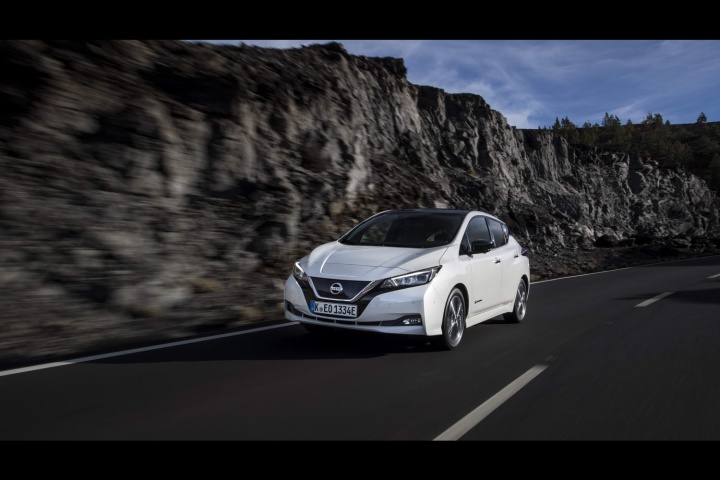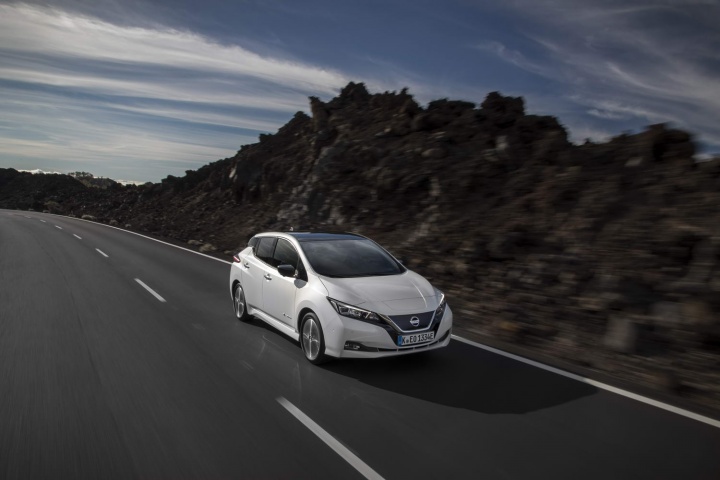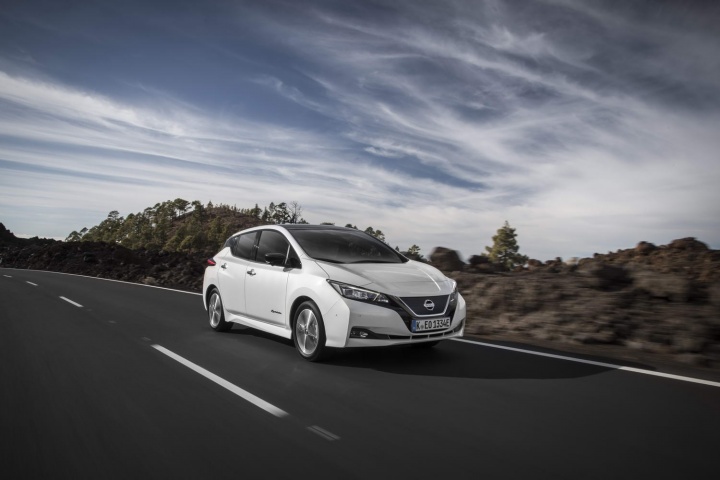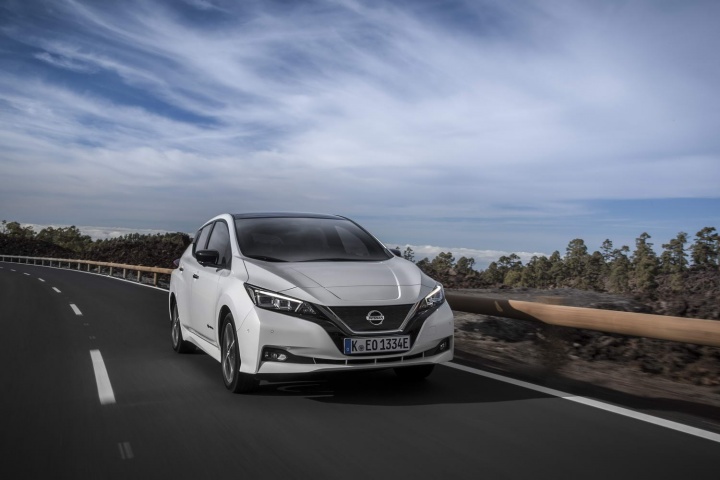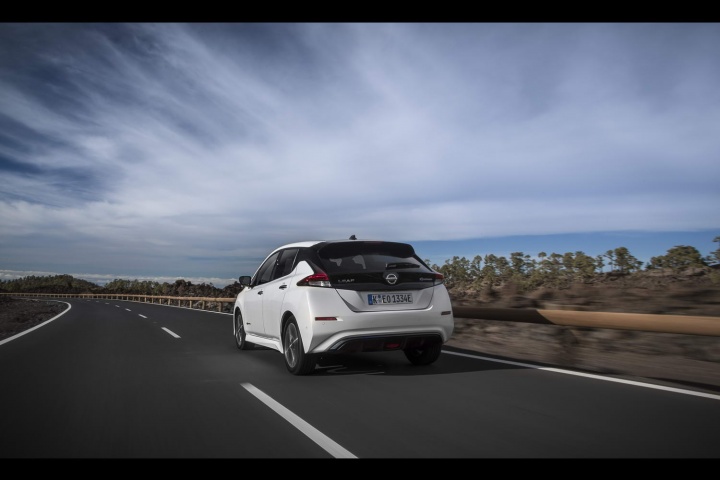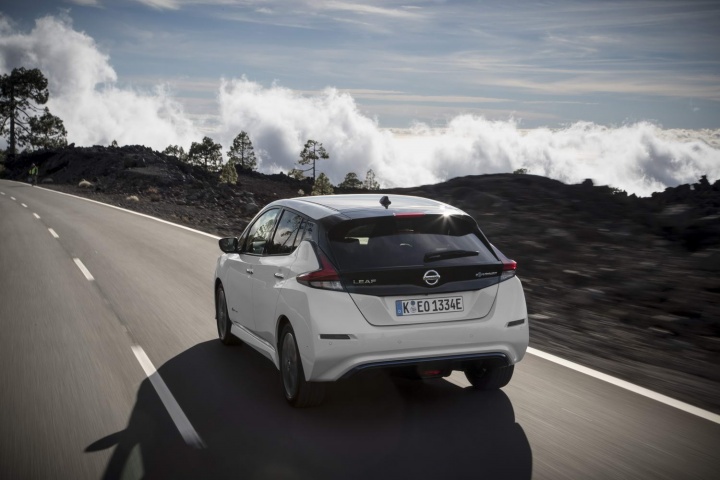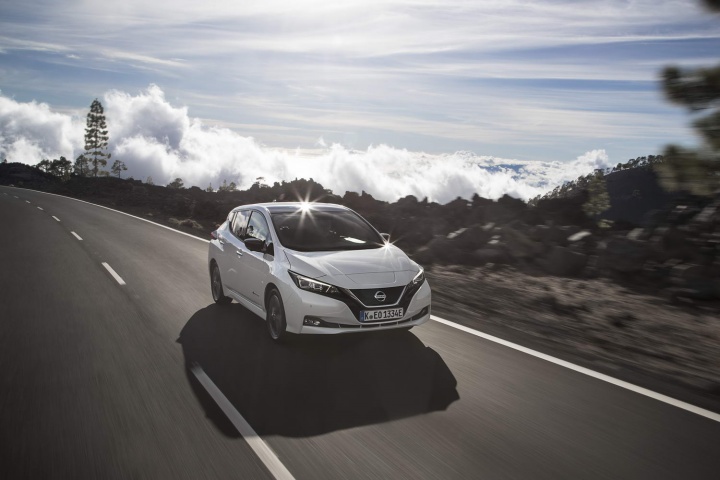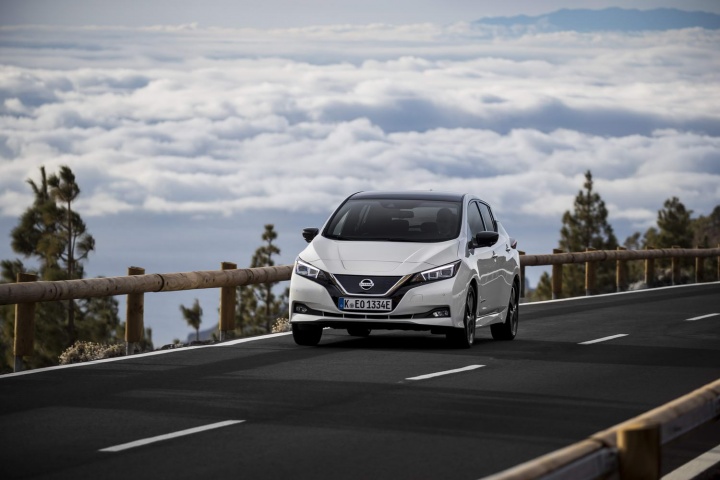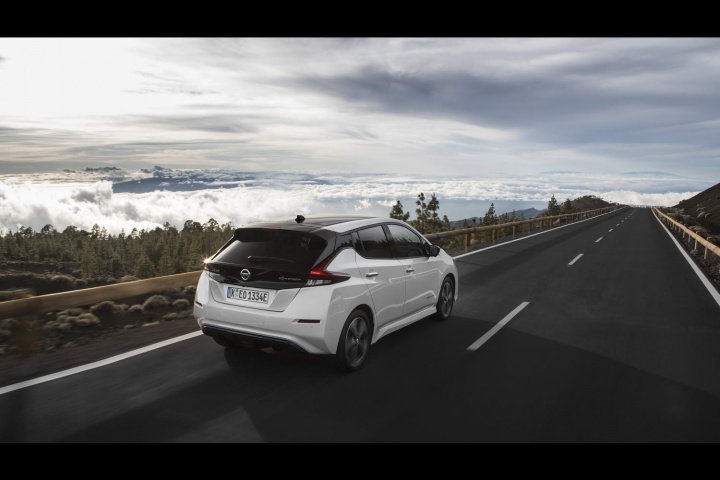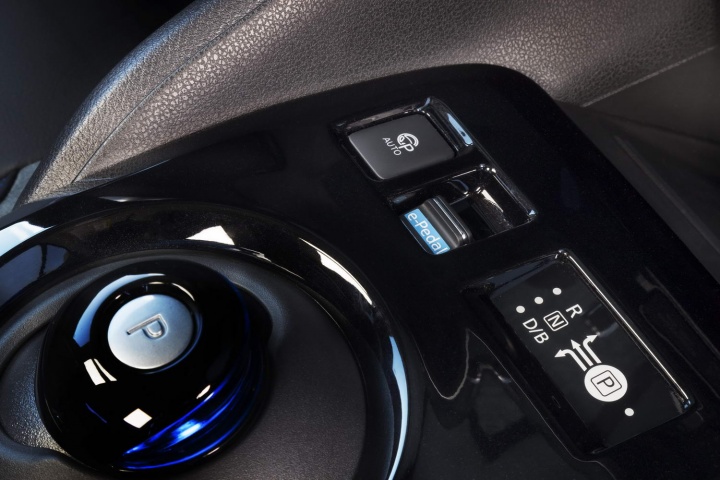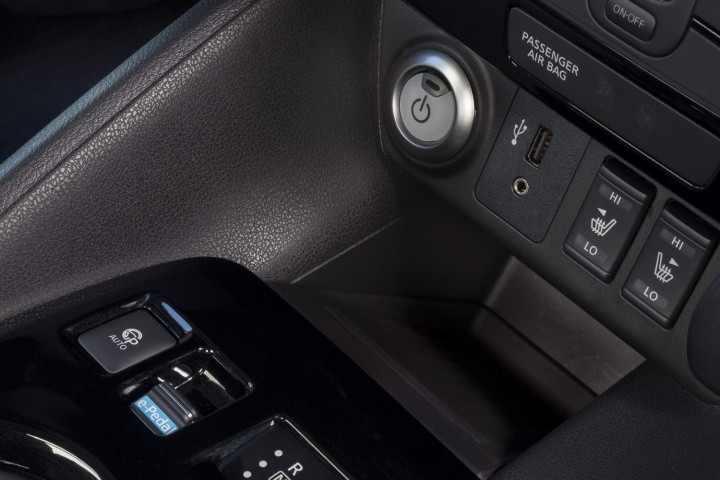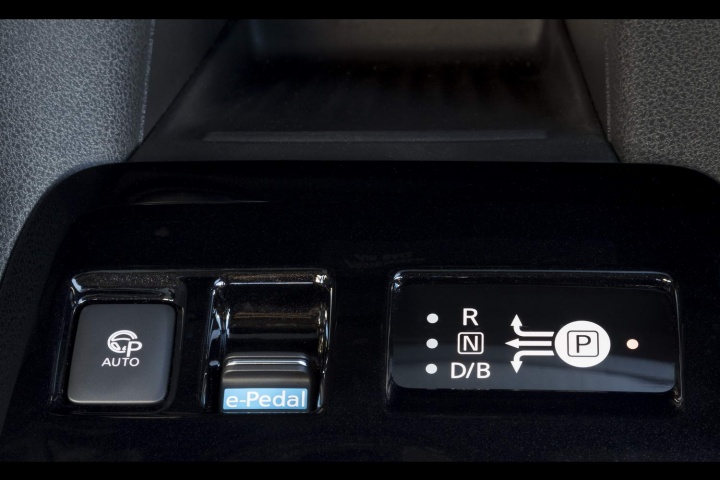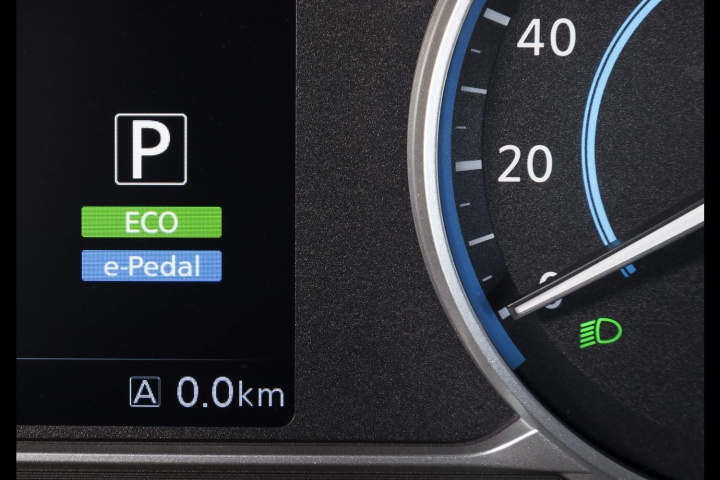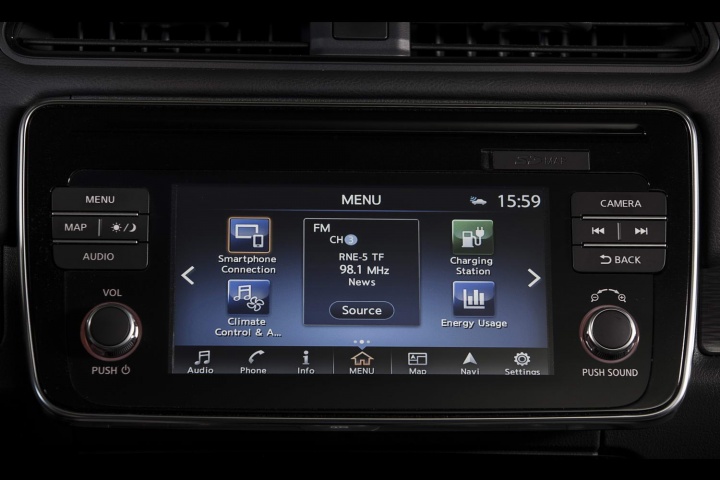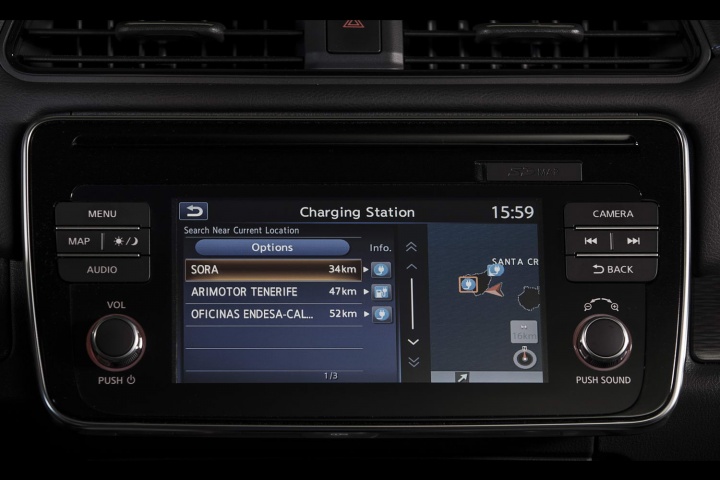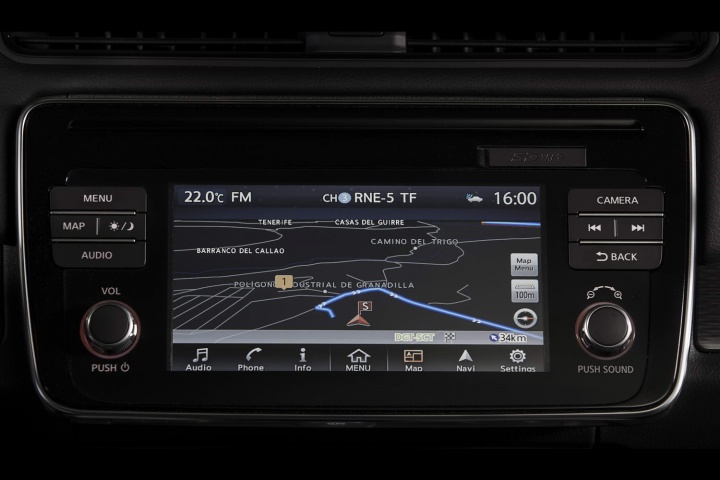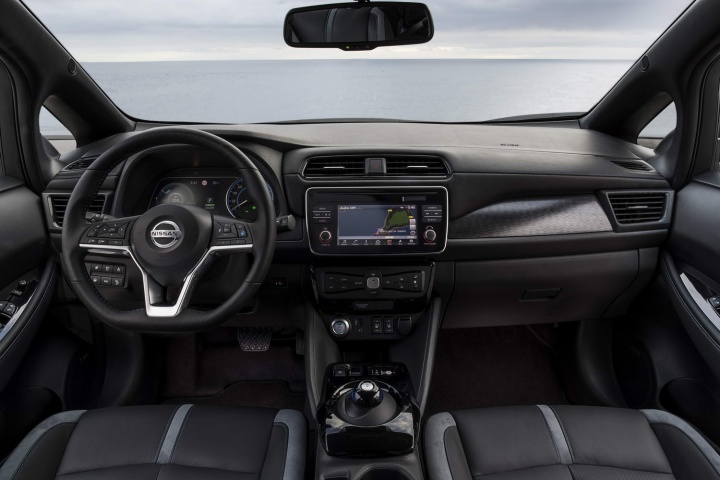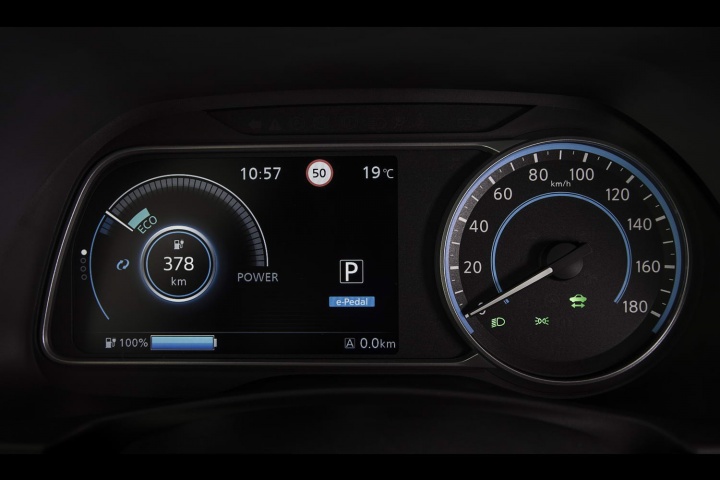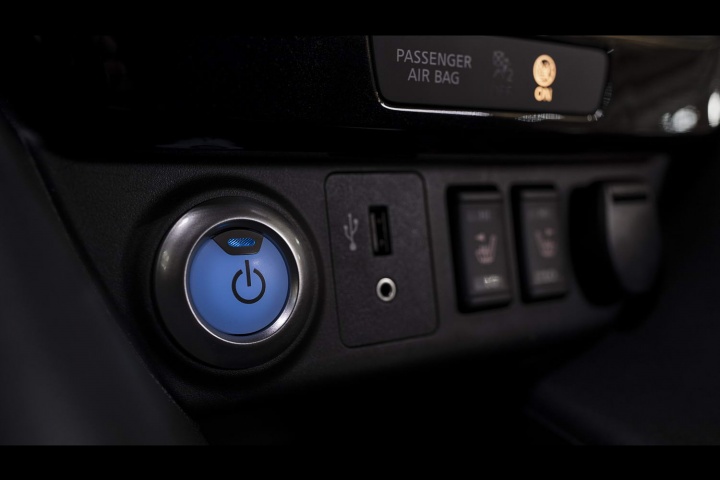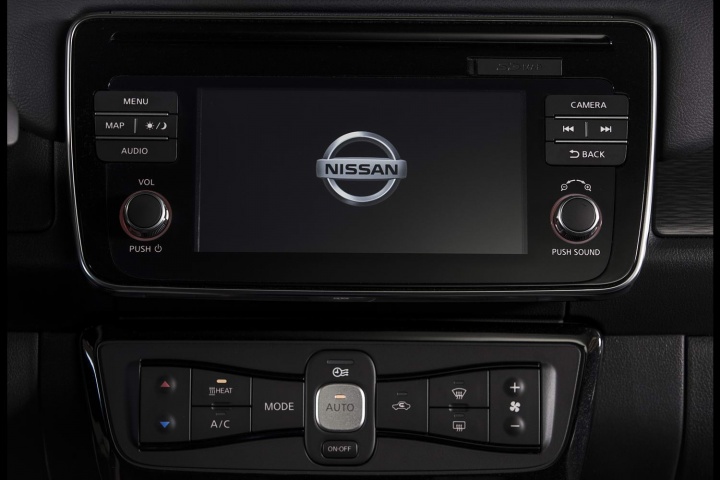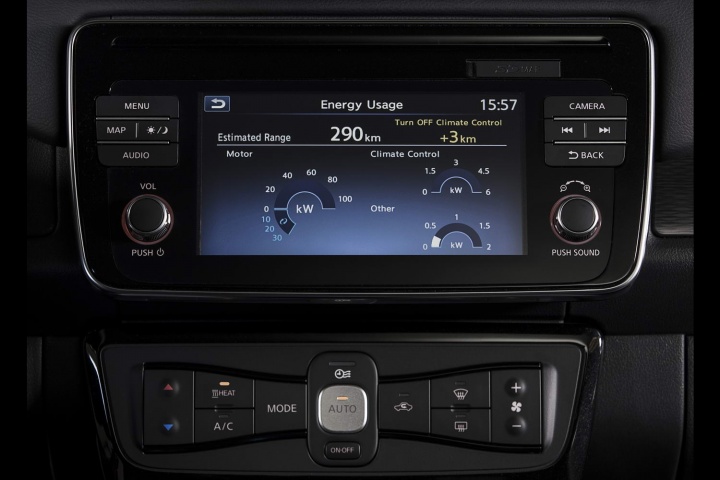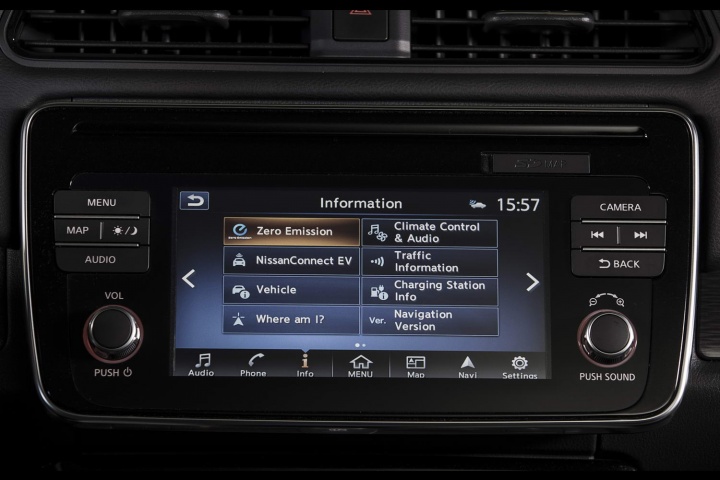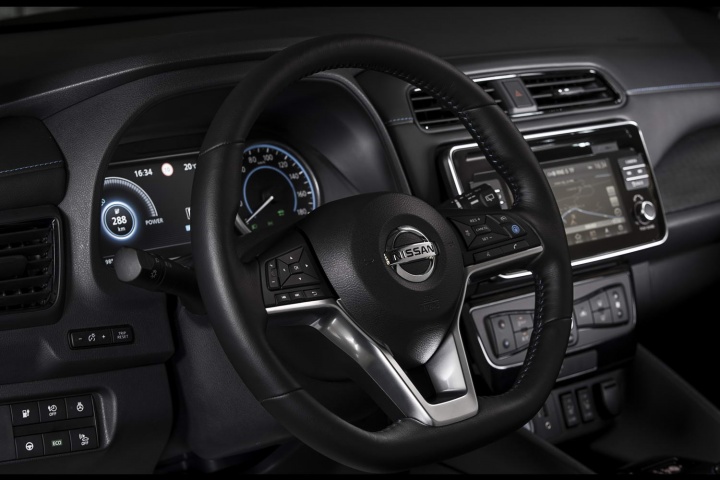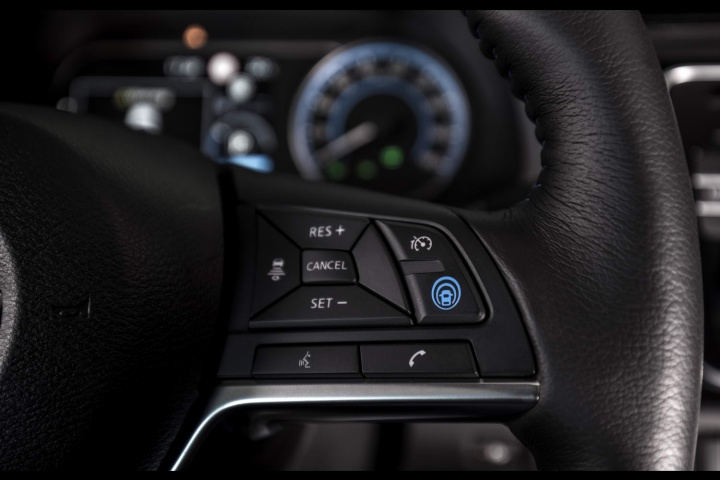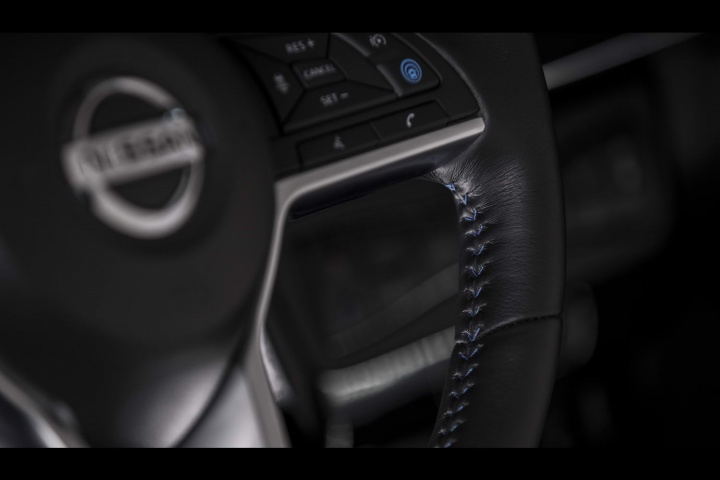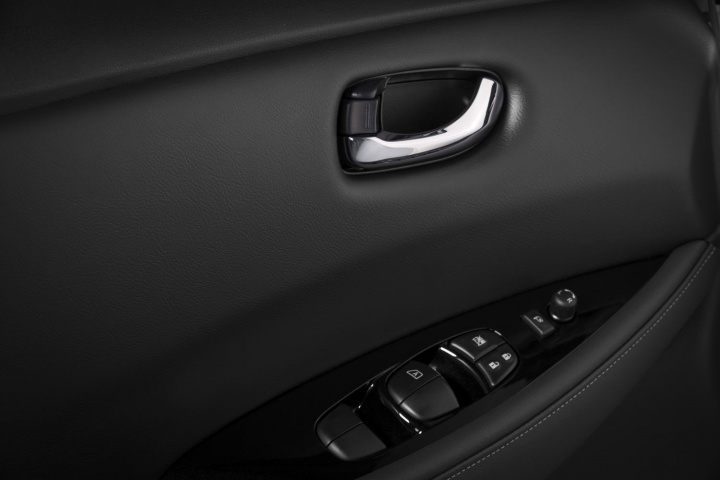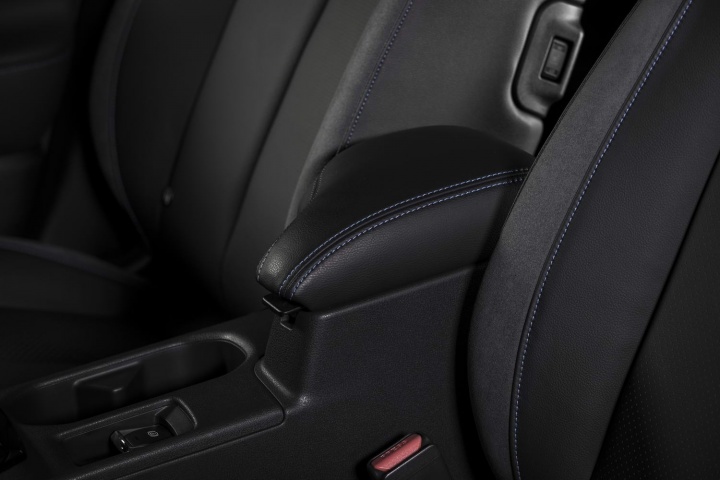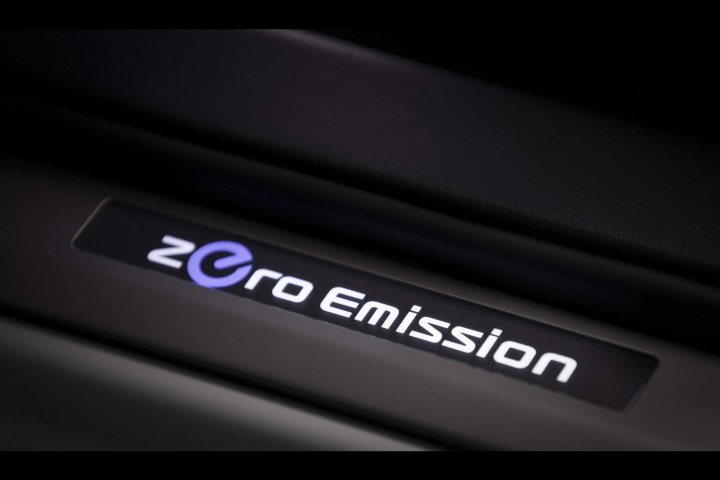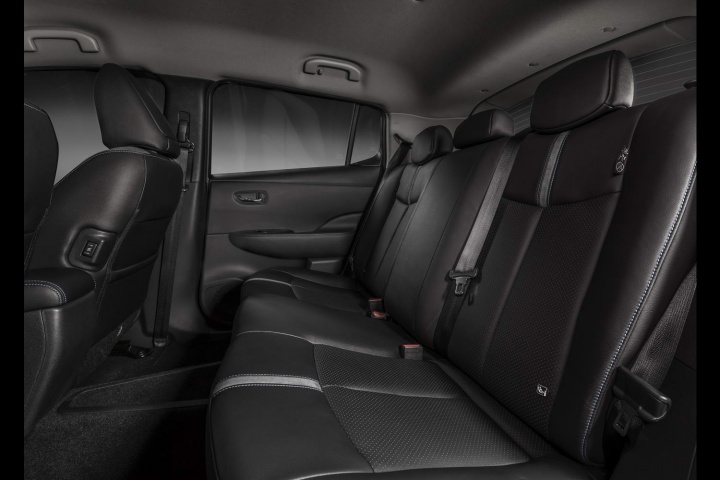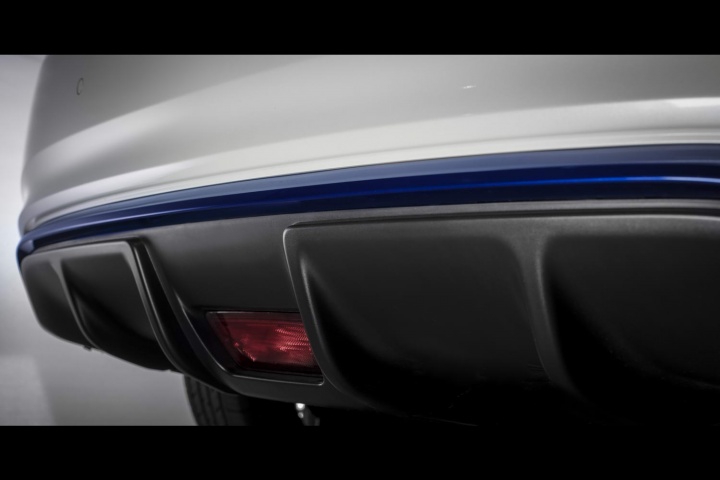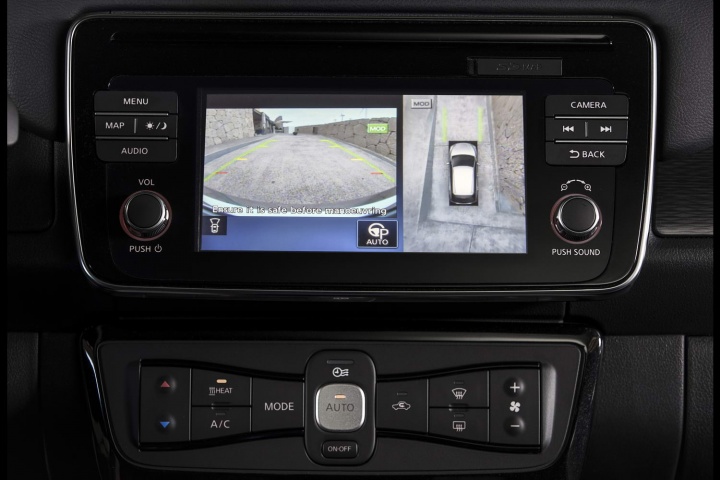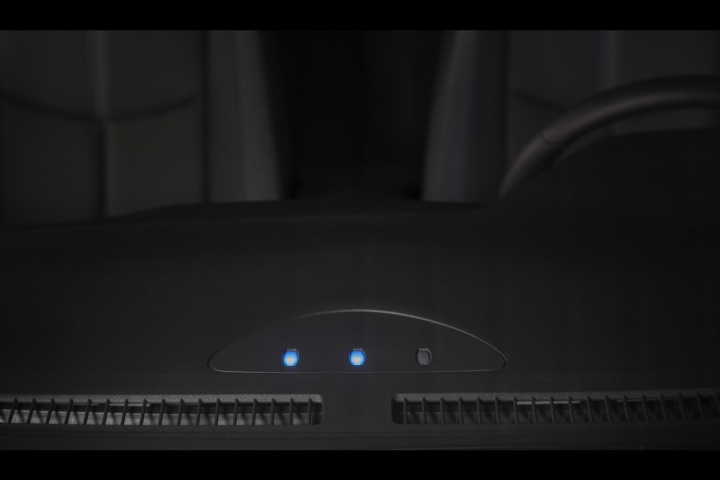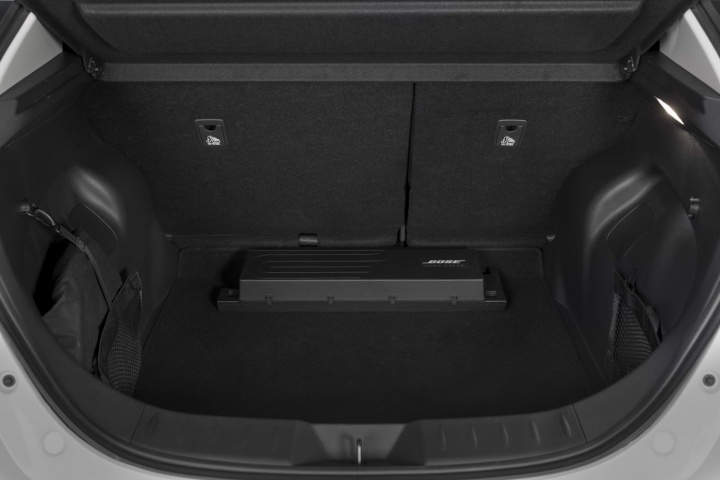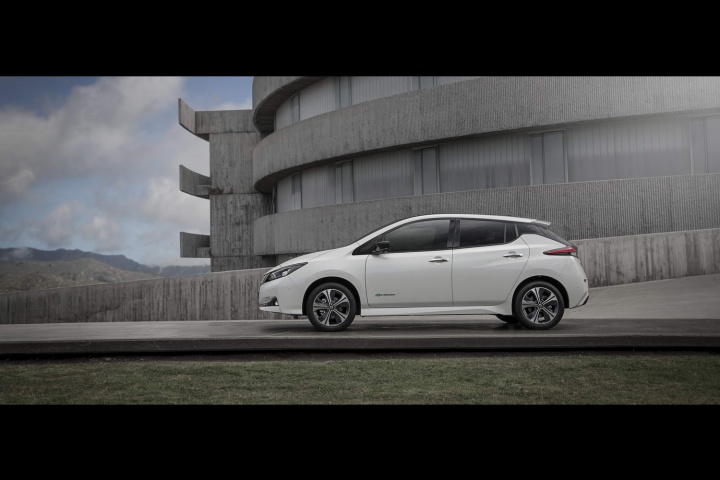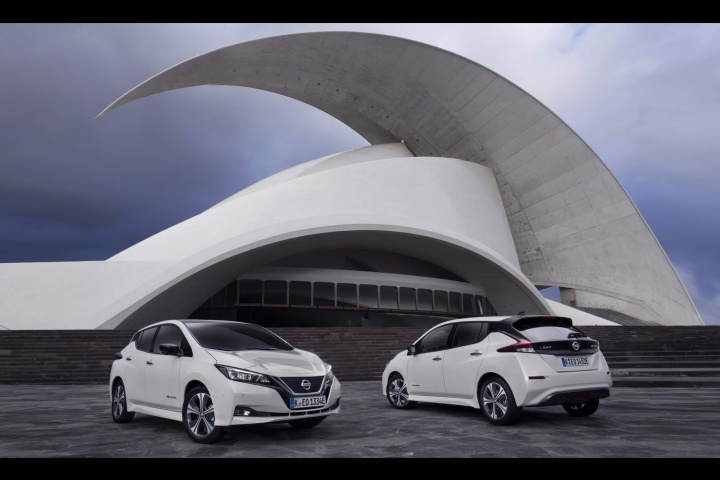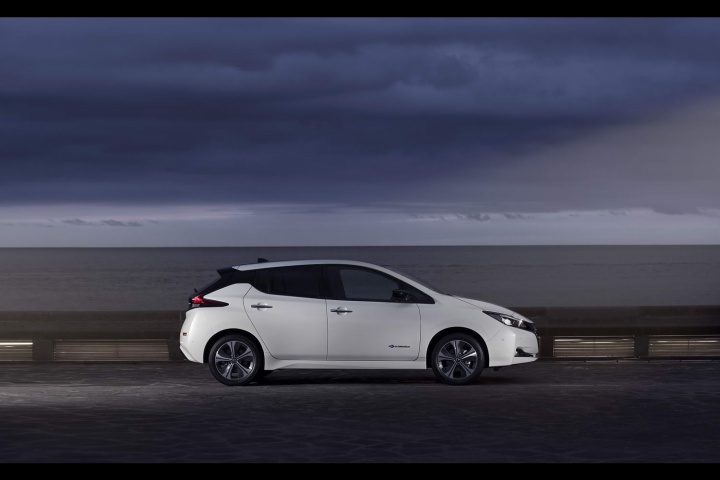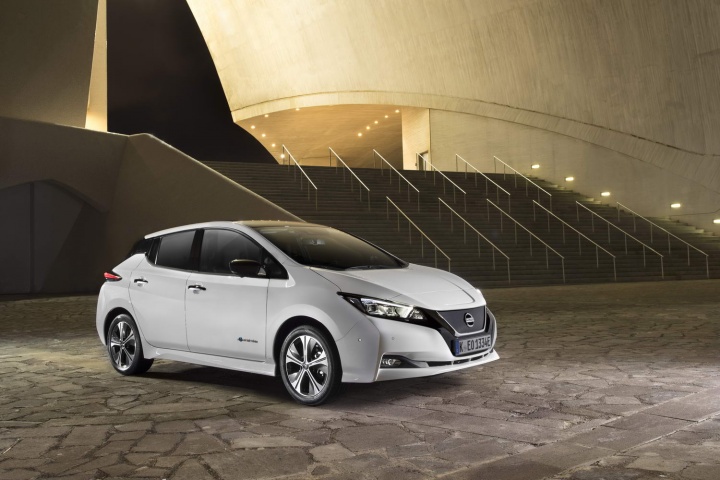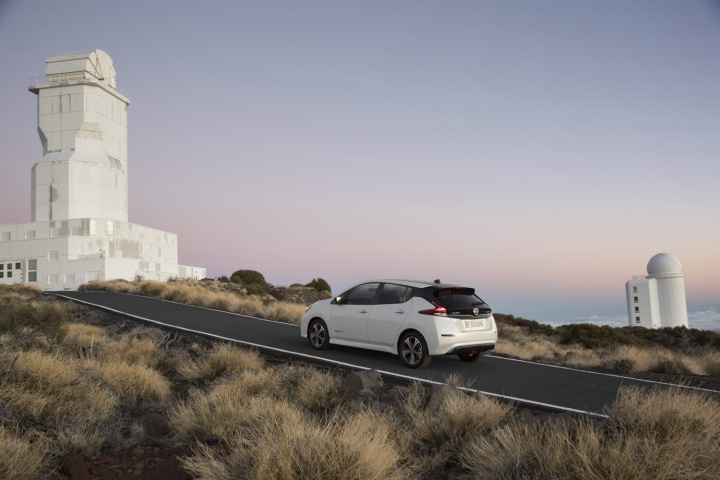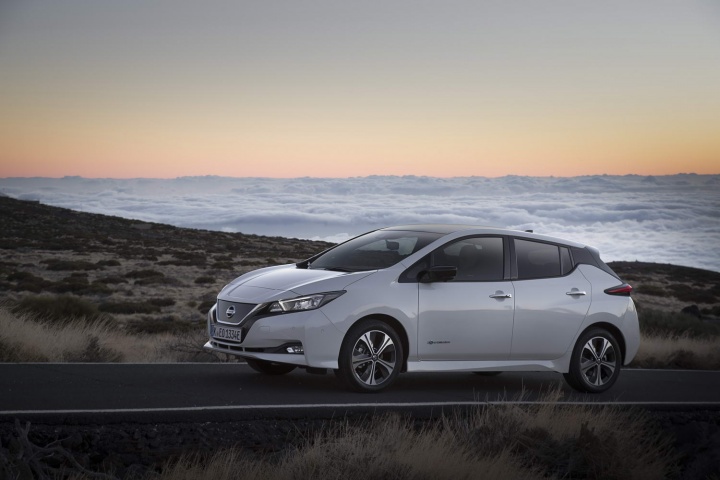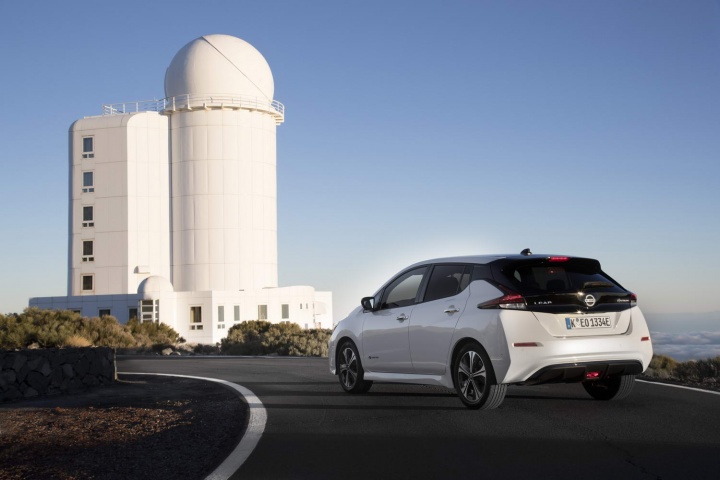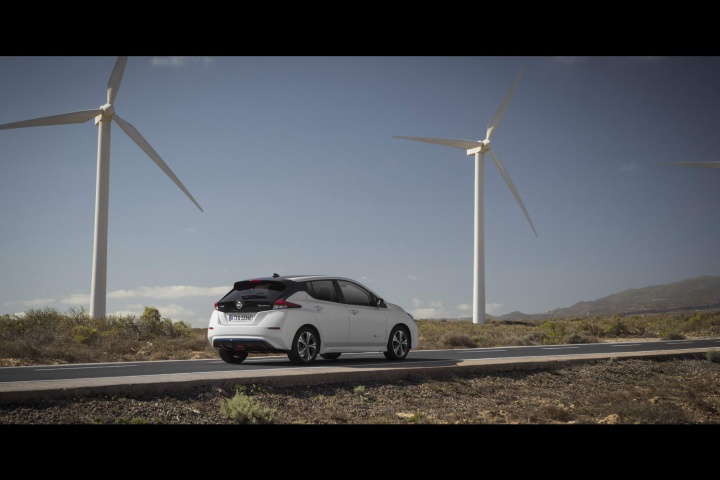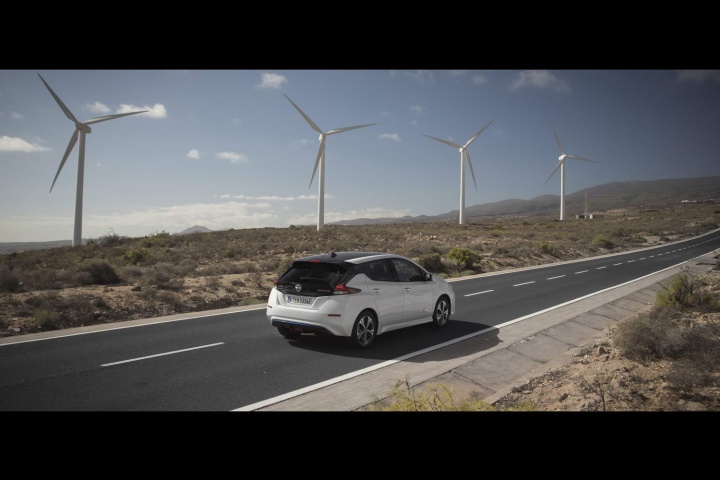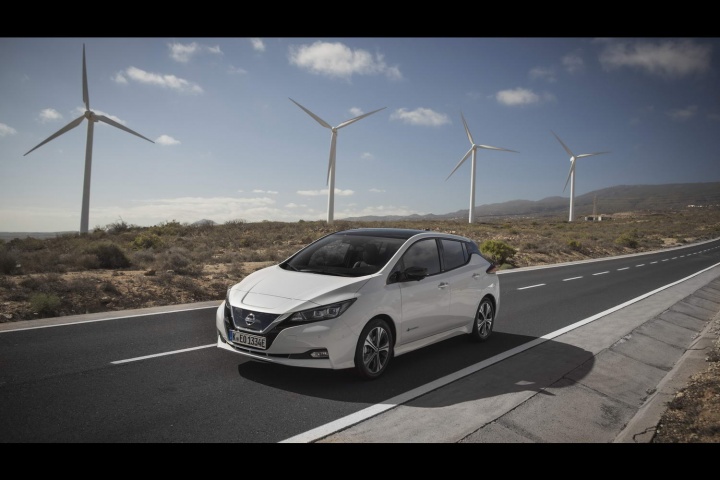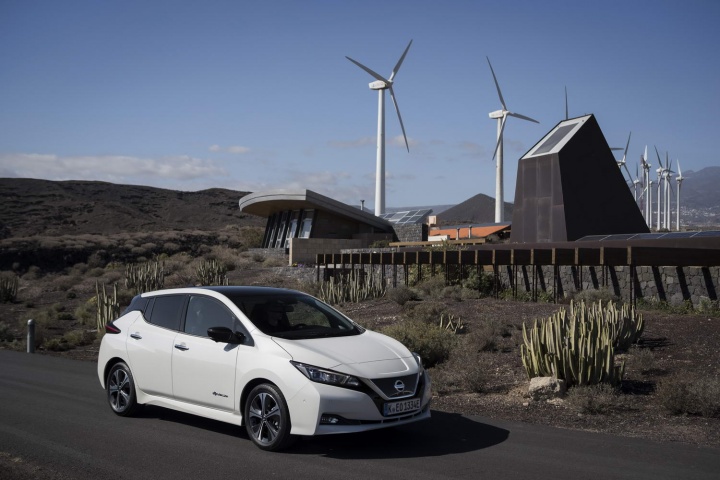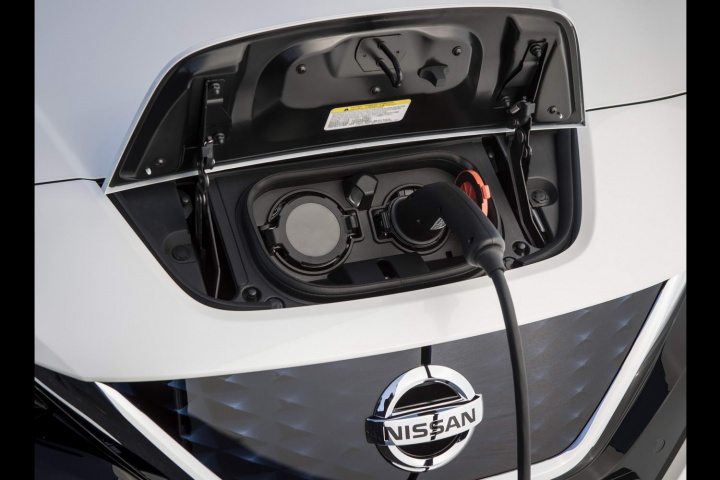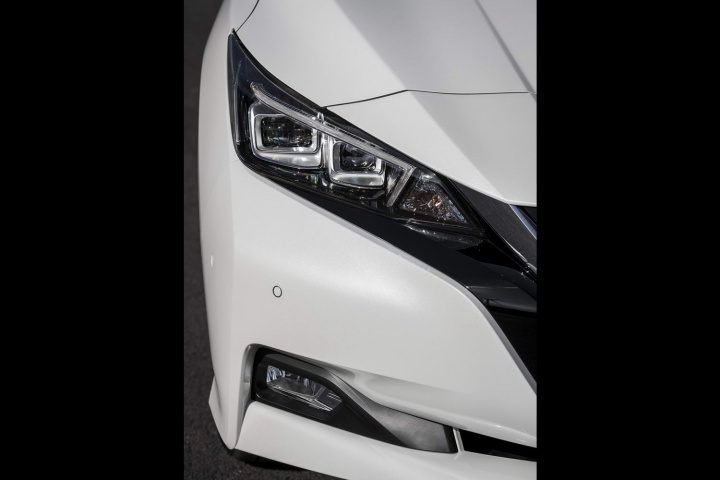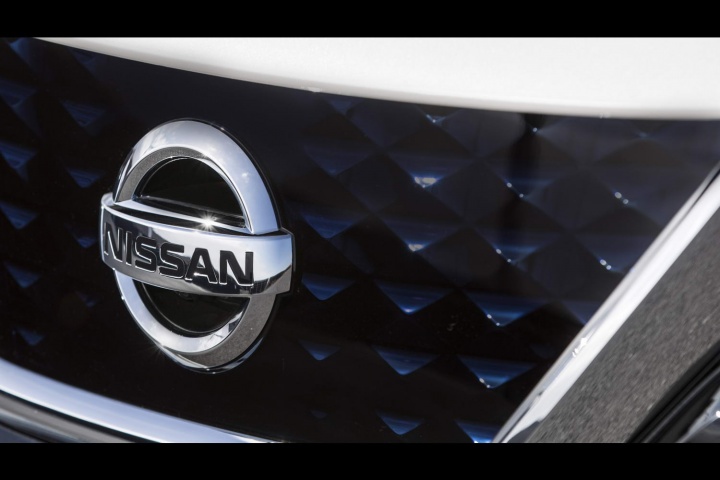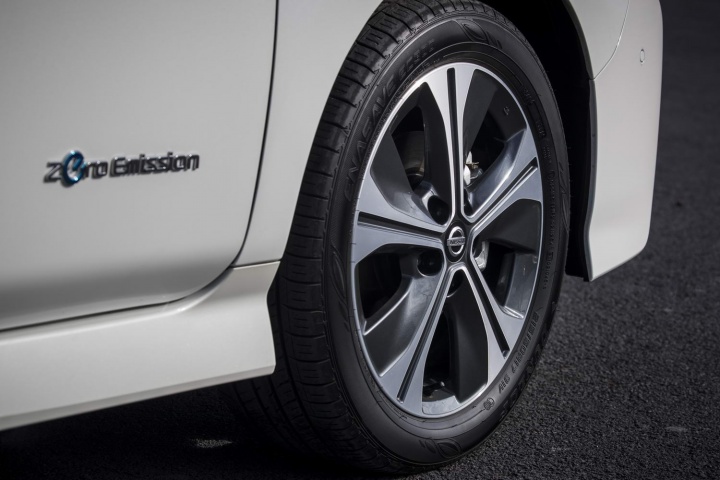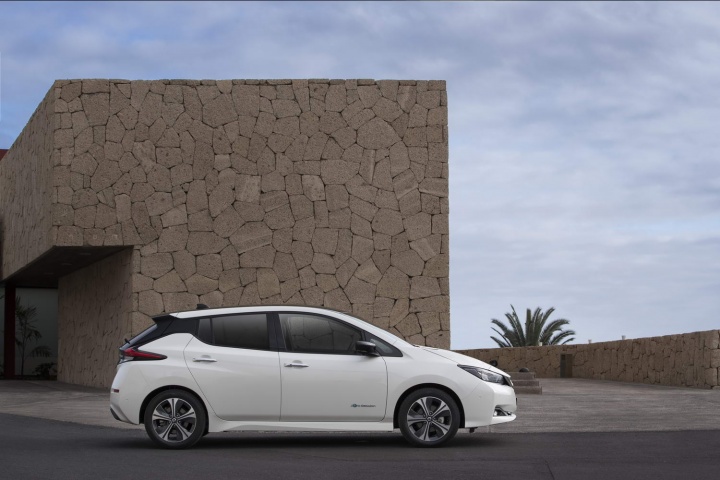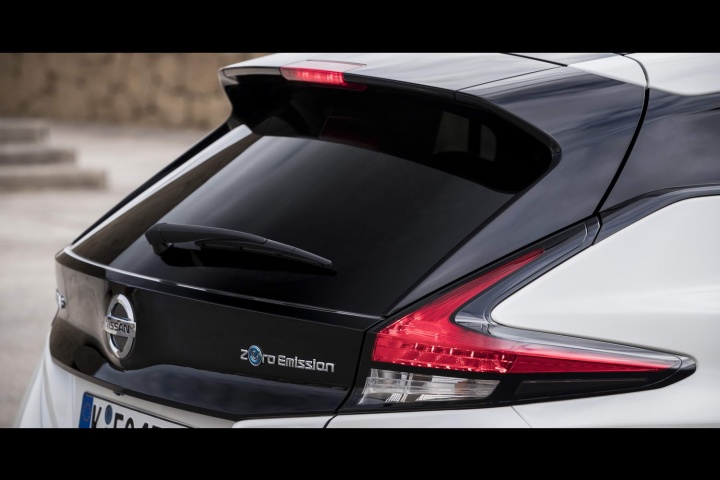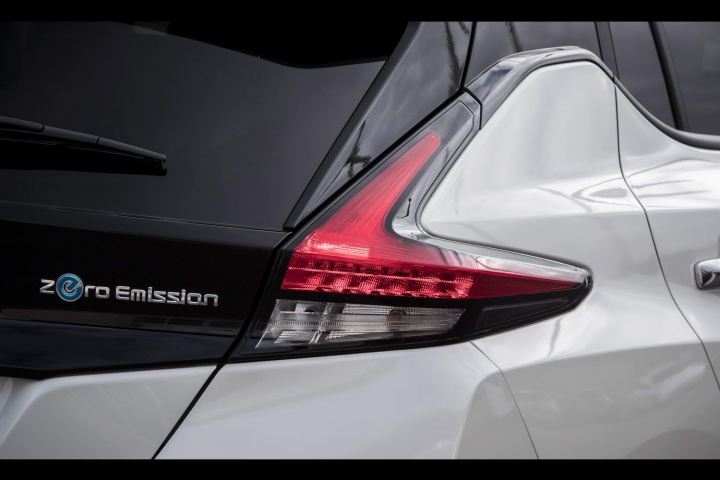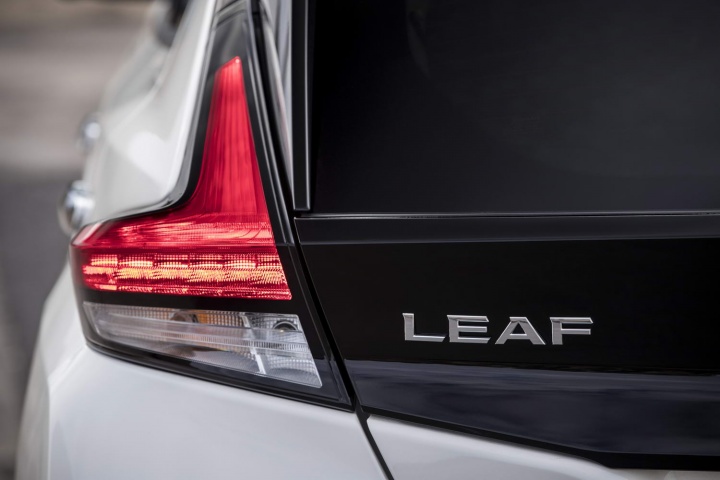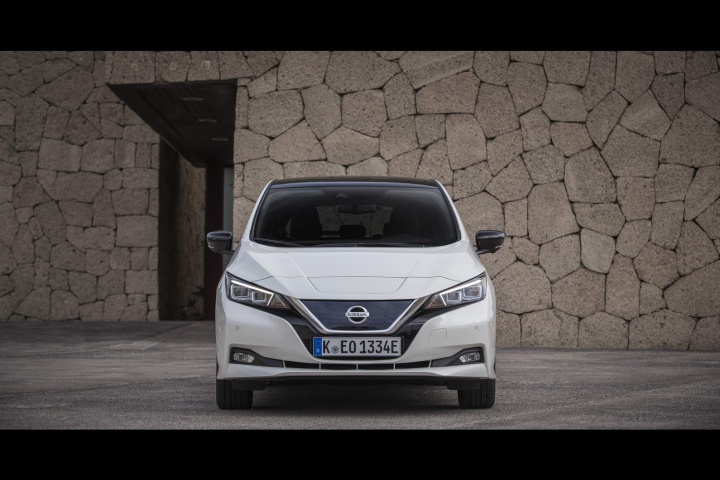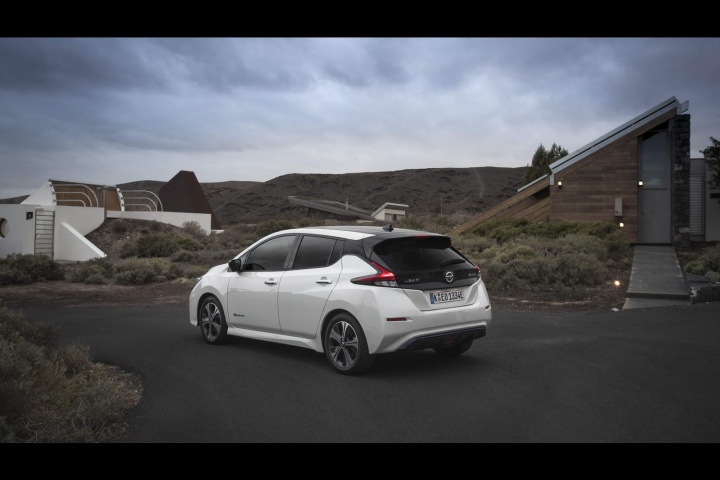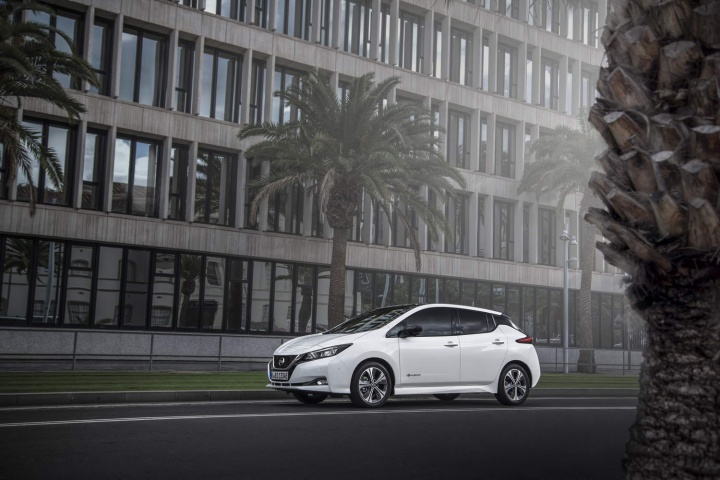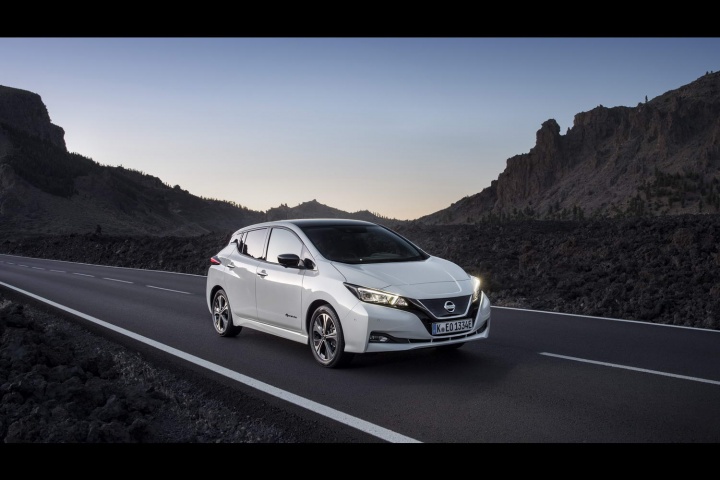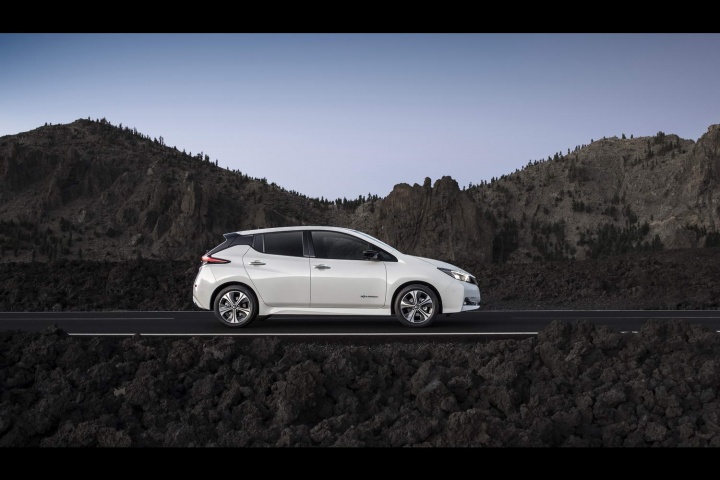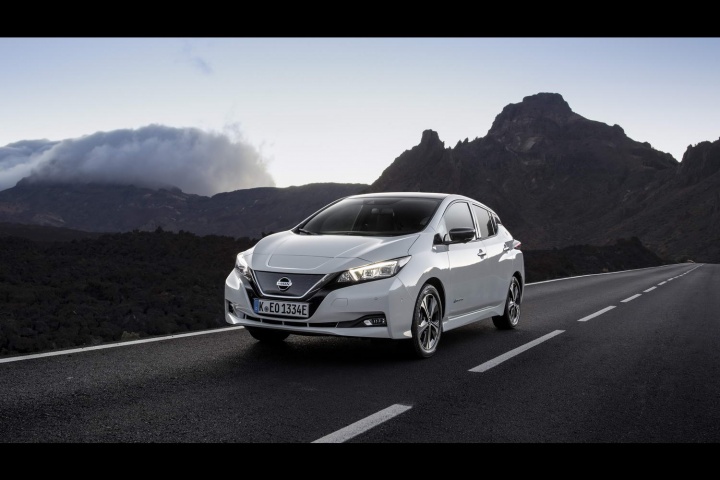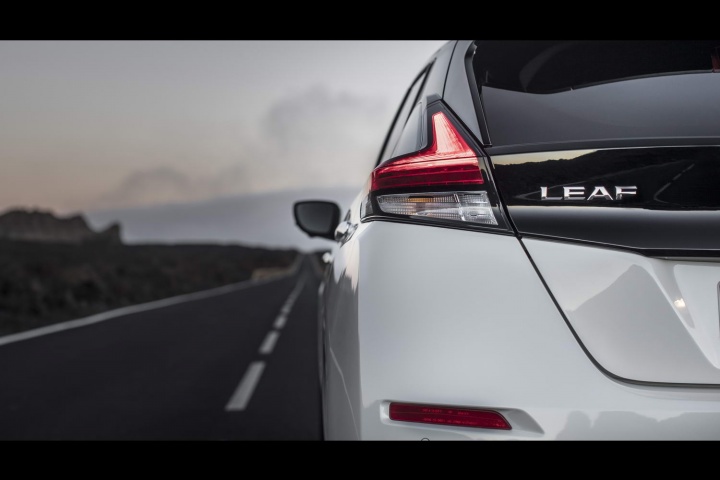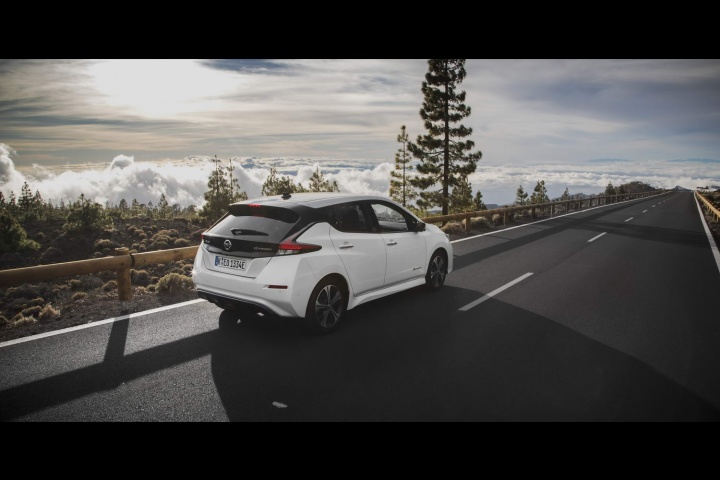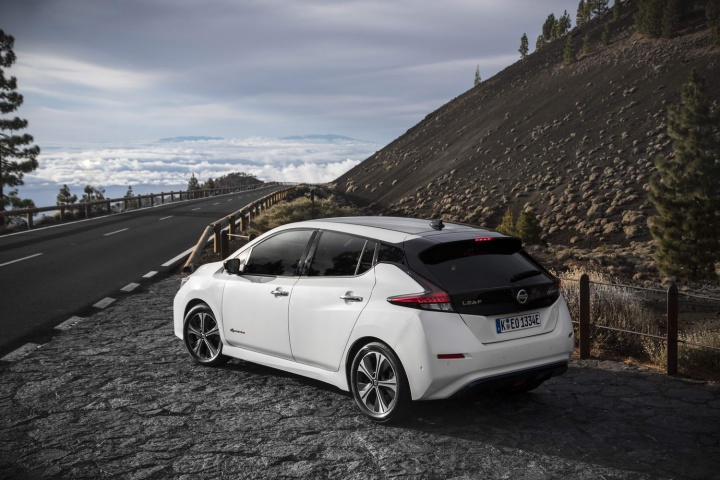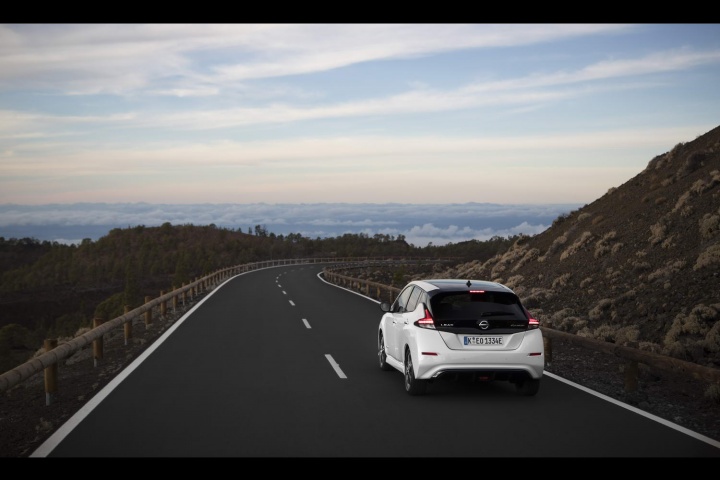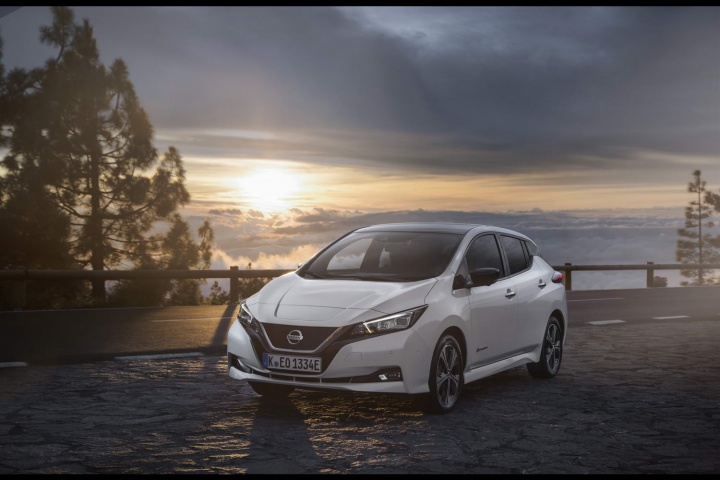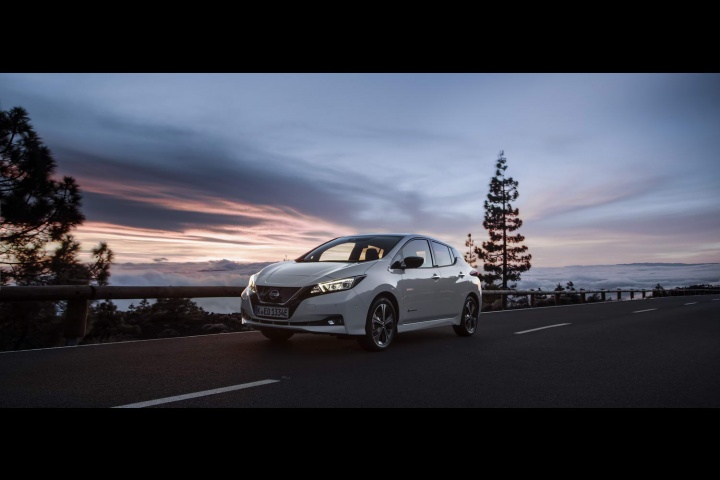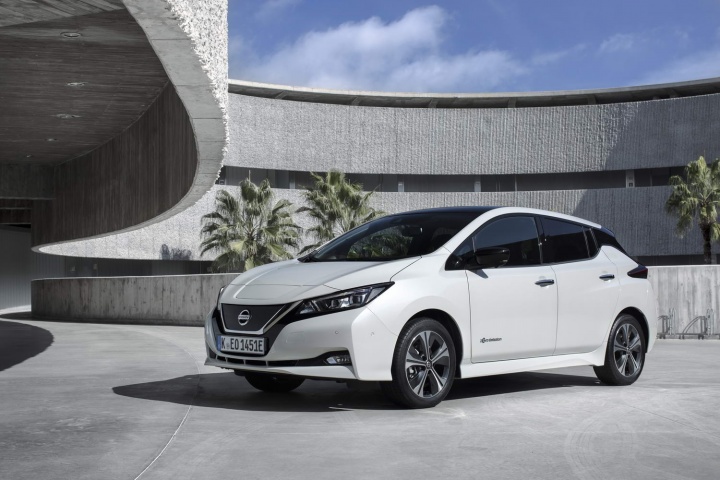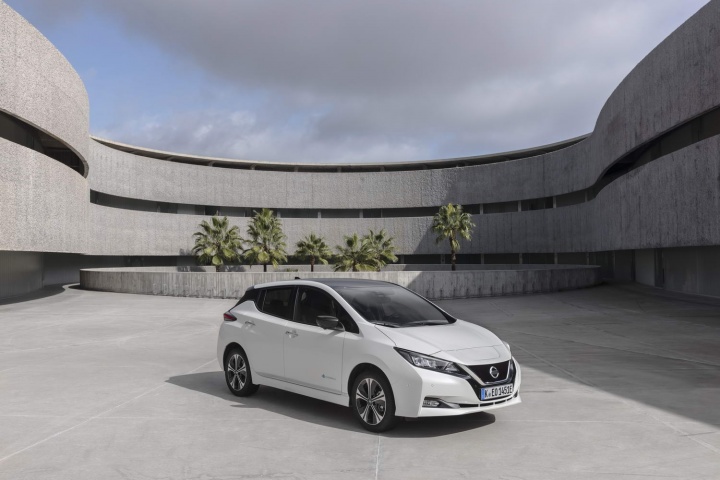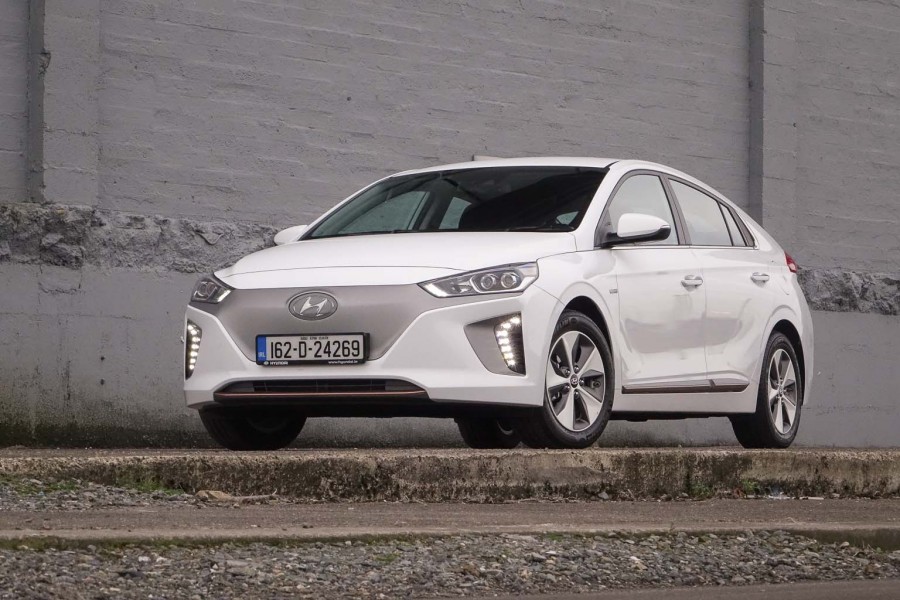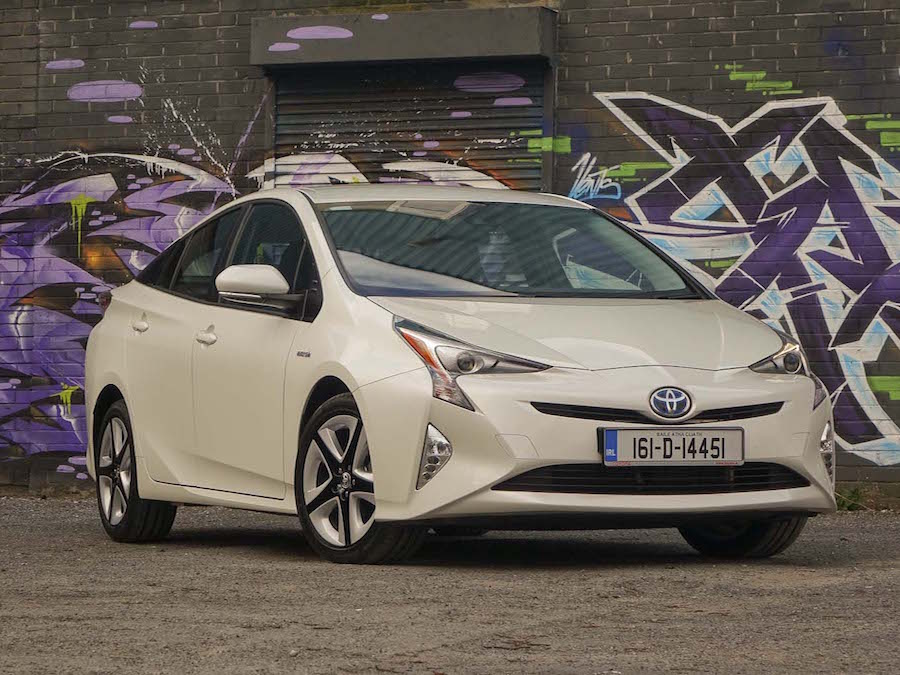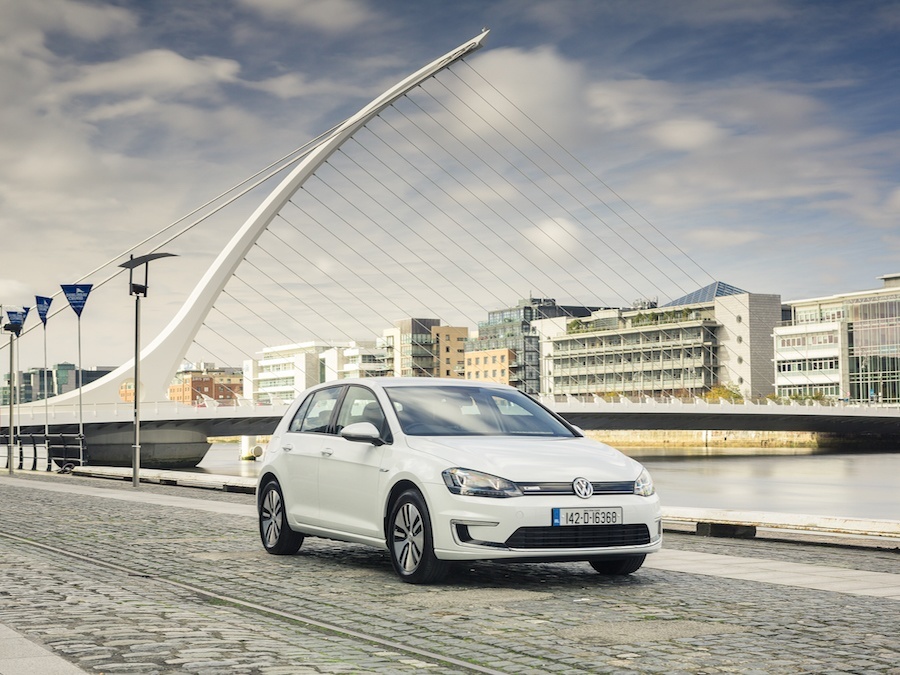The new Nissan Leaf is still compromised on range, compared to petrol or diesel, but significantly less so. Besides its appeal on environmental and tax grounds, it's also exceptionally refined and slightly sharper to drive than before.
In the metal
You could easily mistake the new Leaf for a Nissan Pulsar, and that's kind of the point. Nissan wanted to move it away from the polarising, platypus-nosed looks of the original Leaf (great for look-at-me early adopters, less so for the more conventional masses) and create a car that, through its styling, should begin to normalise the electric car in more peoples' minds. Job done then - it's certainly conventional, and arguably looks a touch slab-sided, but on the whole it's a blandly handsome car. The chunky Micra-style nose looks decent, but actually it's arguably most attractive from the back, where the fancy boomerang tail-lights and black panel combine to pleasing effect.
The cabin represents a big step up from that of the old Leaf. Well, a bit step sideways anyway. Again, it's rather plain and unadventurous in its layout (appealing to the masses, of course...), but the level of quality has taken a distinct turn for the better. The central infotainment screen does look a touch small, compared to some rivals', and the graphics are a little on the older side, but it all works well. There's also something of a scattering of buttons, some of them for crucial systems (such as the range-preserving Eco mode switch), which are tucked away in odd places, so you'll need to spend some time learning where everything lives. While we're adding to the crib sheet, the front seats are rather perched up and a little short of cushion, and the steering wheel adjusts only for rake, not reach. On the upside, space is decent, as is visibility, and the flat-bottomed three-spoke steering wheel looks and feels rather nice.
Underneath, while there's a lot of carry-over platform in the new Leaf; the most significant changes are a new battery and a new electric motor. The motor now develops 150hp and 320Nm of torque, and makes the Leaf feel really brisk (it'll crack a 7.9-second 0-100km/h time if you really go for it). The battery, now a 40kWh unit, has 67 per cent more energy storage than that of the old Leaf, but manages to do so in the same physical space. The body is significantly stiffer, the suspension has been retuned, the steering speeded up and a new E-Pedal regenerative braking system has been fitted.
Driving it
OK, let's talk range first of all. Nissan claims that it's the first car maker to display its results under the new WLTP fuel economy and emissions tests. WLTP is harder and more stringent than the old, largely discredited, NEDC test, and under the harsher regime the new Leaf scores a 270km average one-charge range, and 415km if you keep it around town where the regenerative braking can work to its best effect. For what it's worth, with a test route around the island of Tenerife that included a long stint spent on twisting, vertiginous mountain roads (hardly the Leaf's ideal terrain) we managed to do 160km and returned with a range of 55km left displayed on the dash. Not bad, considering, but we did have to do some slow running on the motorway, and a lot of downhill coasting, to achieve that, so you still will need to plan ahead for longer journeys, especially those not on country or city roads.
There is no doubt that while the new Leaf has not eradicated range anxiety, it has significantly reduced its effects. It feels like a much more confident proposition now, with less of the faffing around looking for fast-chargers on your route (and it can suck down an 80 per cent charge in 40 minutes from a 50kW 'CHADEMO' charger when you need it to).
The stiffer suspension, sharper steering and less floppy body certainly make themselves felt. The Leaf hasn't been turned into an electric hot hatch - far from it - but it does feel more positive and weightier to drive. The twists and turns of the mountain roads were not, shall we say, best suited to it, but equally the Leaf didn't come down from the hill feeling disgraced.
Actually, it's probably at its best on motorways and dual carriageways. Here the ProPilot system can be used, helping to keep you in lane and hold you a safe distance from the car in front, and you can really appreciate the stunning silence of the cabin. Nissan has included a great deal more sound-deadening material in this Leaf, including new fabric rear wheelarch liners, and it shows. Or, more accurately, sounds. It is really quite strikingly quiet in the cabin, even with a gale-force wind blowing in off the Atlantic. It makes travelling in the Leaf really quite relaxing and, if you moderate your speed and use the occasional aerodynamic tow from a larger vehicle, you can knock off a surprising amount of motorway miles without much denting your charge range.
Around town, of course, the Leaf comes more and more into its element, and some of this is down to the E-Pedal. Rather like BMW's i3, the E-Pedal means that when you lift off the accelerator, the car triggers maximum regenerative braking, using the electric motor to both slow the car and return some juice to the battery. By using a well-judged mix of both regeneration and physical brakes, it can slow you down at up to 0.2G of deceleration (so feels like firm-but-gentle braking) and can even come to a complete stop, and hold the car on a hill, without ever touching the actual brake pedal. It certainly makes city driving a bit more of a breeze, but that is undermined somewhat by an overly-stiff ride quality when the road surface is less than perfect, a result of that battery and its contribution to the hefty 1,500kg kerb weight, no doubt.
What you get for your money
We won't know prices for the Leaf for a few weeks yet - Nissan Ireland is still negotiating them with the mothership, but they should be roughly in line with the likes of the rival Hyundai Ioniq and the Toyota Prius, certainly at the basic level. That basic car, badged XE, comes with a seven-inch digital instrument screen, steel wheels, LED daytime running lights, automatic air conditioning, the E-Pedal, autonomous emergency braking, lane departure warning and lane keeping steering, high-beam assist and blind spot warning, plus the 5.8-inch touchscreen with DAB, navigation and the Nissan Connect app. If you want alloys and a bigger touchscreen, you need to upgrade to an SV, which comes with Apple CarPlay and Android Auto as well, while an SV Premium gets full LED headlights, the surround-view camera system and parking sensors. Range-topping SVE models get a Bose stereo, the ProPilot system, heated leather seats and steering wheel and an electronic parking brake. From May, the ProPilot Park, a fully automated self-parking system that can deal with parallel, nose-in and even slanted parking bays, will be available.
Summary
It's a little tricky to get a full handle on the new Nissan Leaf just yet - we need to try one at home, on familiar roads, to draw meaningful conclusions on its one-charge range, and we need to know its price tag. What we can say is this: it's more sophisticated, more refined, more advanced, better to drive and arguably better looking than its predecessor. And it's already a success - 12,000 have been sold before a single customer has even turned a wheel. It's not quite the final turn of the electric revolution, but it's another notch on the way, and a significant one at that.

